What to wear in Vietnam? - All You Need to Know
When travelling to Vietnam, understanding the weather in advance can be of great help. Vietnam can be geographically divided into a north and south region. The southern region of Vietnam mainly has only dry and wet seasons. The northern region is characterized by the general 4 seasons that we have around the world. In this article, we will talk about the clothes and items that you should pack according to the season you are visiting Vietnam in. Read on to find out -
- The winter season lasts from the month of December to March
- The spring season lasts from the month of March to June
- The summer season lasts from the month of June to September
- The autumn season lasts from September to the month of December

What Should You Wear for Winter in Vietnam?

Winter is one of the best times to visit Vietnam. As the temperature in the winter season isn’t too low or too high it serves as a good spot for exploration. This season that lasts from December to March, sees a lot of festivities relative to the Vietnamese people. Celebrations like Christmas, Tet, the Vietnamese Lunar year all give an amazing insight into the cultural lives of the local folk. For this weather, it will be advised to carry lots of warm clothing with yourself. Sweaters, socks, and hand gloves are necessary. During this time, mountainous regions like Sa Pa and Ha Giang give an incredible trekking experience. Therefore, make sure you pack a good pair of shoes. Parts of Sa Pa and others have also been known to be drizzly during this time. Just to be safe, carry a torchlight, a jacket, and an umbrella wherever you go.
What to Wear for Spring in Vietnam?

The spring in Vietnam is a short season that lasts from the month of March to June. It is a better time to visit the country before the summer strikes as parts of the country become unbearably hot during summers. While temperatures in these times go up to 25 degrees, you need a separate plethora of time to pack for this tropical holiday. As the temperatures are ideally favourable for exploration, this time of the year is said to be the best for hanging out at the beach.
This ultimate beach time calls for a bathing suit and beach clothes but makes sure it isn’t too revealing. As the weather is sunny and warm make sure to pack breezy, loose-fitting shirts and dresses that can dry up quickly. The dresses should cover your knees, otherwise, you can pair up the tops with skirts. Make sure to pack light clothes, sunscreen, and a pair of sunglasses.
What to Wear for Summer in Vietnam?

The temperature in Vietnam for summers soars up to 30 degrees Celcius, although the weather can still be a little humid. Do not take clothes with fabrics that take a lot of time to dry, you don’t want to roam around the city in a sweaty t-shirt! You can pack a bunch of linen clothes with a colourful palette. Athletic wear to stay and absorb sweat can particularly be handy when you go for activities such as trekking. In such cases, though denim seems a good option, it will weigh you down when hiking.
Make sure to pack some lightweight trousers. For beach enthusiasts, it would help to keep a pair of flip flops in your backpack but also pack good shoes to help you in laborious activities like hiking or just roaming around the entire city. Another thing to remember is that the summer season marks the onset of the rains. Make sure to carry a poncho or umbrella wherever you go.
What to Wear for Autumn in Vietnam?

Weather changes substantially from one place in Vietnam to the other. The rainy season lasts till November or December in some places. Be aware of all the places you will be staying while your visit to Vietnam and pack all your belongings accordingly. Pack up t-shirts and light cotton or linen trousers along with good trainers (shoes). But it will be difficult for your shoes to dry quickly so keep a pair of flip flops or sandals handy. Do not use the flip flops when going to a hike or in extreme rain as it can be slippery and unsafe. As this season lasts till November, take some layered clothes, jacket, socks, and scarf as the temperatures start dropping by the end of October.
Some Tips On What to Wear in Vietnam
- It is important to study where you are going to stay while you visit. As most of the tourist spots are located in areas where locals and the tribal people reside, it will be good to understand what dress code they follow in their locality.
- Vietnam as a country is conservative, though this might vary from region to region, it is always good to dress in accordance with their culture and tradition to not hurt their sentiments. When travelling to cultural places or local markets women are advised not to dress in short skirts, pants, or low cut tops or dresses.
- For men, casual jeans and shirts are the normal dress code, but they are advised not to take off their shirts in public places if it gets too hot. Especially in cities like Ho Chi Minh can be very hot in summer.
- You should be properly covered up and wear appropriate clothes. This is applicable to both women and men. In places like pagodas, temples, mosques, or churches you can be denied entry based on your inappropriate dressing.
- Vietnam has a lot of beaches, but even if you dress up for hitting a beach you are advised to not go fully or half-naked. This is just to ensure that the sanctity of the Vietnamese culture and to not make anyone uncomfortable.
- There is a tradition in Vietnam where you take off your shoes when you visit holy places like pagodas or even before you enter any local house.
This post was published by Kiran Kulkarni
Share this post on social media Facebook Twitter
Vietnam Travel Packages
Compare quotes from upto 3 travel agents for free
Vietnam Package Tour 7 Days: With Excursion to Mekong Delta
Best of vietnam holiday package including halong bay cruise.
Explore Vietnam Holiday Trip with Halong Bay Cruise
Experience the Best of Vietnam - 11 Nights 12 Days
7 Days Package Trip to Vietnam: Free Water Puppet Theatre
Luxury Vietnam Honeymoon: 7 Nights Blissful Package Deal
Related articles.

Travel Tips
Basic Phrases in Vietnamese
Travel Tips To Vietnam That You Must Keep in Mind
Vietnamese Visa For Indians - A Complete Guide

Airports in Vietnam: A Guide to Fast-travel Across the Country
Currency Of Vietnam - Vietnamese Dong Exchange, ATMs and Useful Tips
32 Facts About Vietnam That Is Sure To Intrigue You

Backpacking
Backpacking in Vietnam - A Complete Guide
Online Visa for Vietnam - Procedures, Fees, Eligibility Criteria
Smoking in Vietnam - What to Know Before Lighting that Bud
Safety in Vietnam - 8 Tips for a Safe and Memorable Vacation

Bikini Airline Vietjet Launching In India Soon

Fairs & Festivals
Vietnam in February - Weather, Best Places and Festivals
Vietnam in March - Your Guide to Weather, Best Places and Festivals
Vietnam in April - Weather, Best Places, Events and Festivals

Sightseeing
Vietnam in May - Weather, Events and Festivals, Best Places to Visit

Experiences
Vietnam in June - Weather, Temperature, Things to Do
Vietnam in August - Weather, Events and Festivals, Best Places To Visit
Vietnam in September - Weather, Events and Festivals, Best Places To Visit
Vietnam in October- Weather, Events and Festivals, Best Places To Visit

Vietnam in November- Weather, Events and Festivals, Best Places To Visit
Vietnam in Winter - Weather, Festivals & Best Places to Visit
Vietnam in December- Weather, Events and Festivals, Best Places To Visit
10 Spas in Vietnam to Rejuvenate Your Weary Soul
Public Holidays in Vietnam 2023 - The Complete List

Shopping in Vietnam: Top 20 Places for Every Shopaholic

Art & Culture
History of Vietnam: From 3rd BC to 21st Century
Scuba Diving in Vietnam: 8 Best Spots For Exploring The Underwater World
10 Festivals In Vietnam to Experience the Colour and Culture
Transportation in Vietnam - A Guide to Getting Around in Vietnam
Train Travel in Vietnam: What to Know When You Travel Vietnam By Train
Comments on this post
Browse package collections, vietnam package collections.
Vietnam Honeymoon Packages
Cambodia Vietnam Tour Packages
Top Listed Packages
Jewels of Cambodia and Vietnam Tour Package With Cruise
Vietnam Itinerary 5 Days with Excursion to Ninh Binh
Vietnam Itinerary 8 Days: With Golden Sand Dunes in Mui Ne
Vietnam Itinerary 6 Days: Best of Northern Vietnam
Vietnam Itinerary 4 Days - Hanoi and Halong Bay
Browse Hotel Collections
By hotel type.
Best Resorts in Vietnam
Amazing Villas in Vietnam for the Perfect Family Vacation
Quirky Capsule Hotels in Vietnam
Beautiful Homestays in Vietnam for a Cosy Vacation
By Budget Category
Luxury Hotels in Vietnam that Redefine Class and Comfort
Luxury Resorts in Vietnam
By Star Category
5 Star hotels in Vietnam for a Luxurious Getaway
For Special Purposes
Best Beach Resorts in Vietnam
Top Places in Vietnam

Get the best offers on Travel Packages
Compare package quotes from top travel agents
Compare upto 3 quotes for free
- India (+91)
*Final prices will be shared by our partner agents based on your requirements.
Log in to your account
Welcome to holidify.
Forget Password?
Share this page

The Perfect Vietnam Itinerary for 1, 2, or 3 Weeks
- Last Updated: January 25, 2024
If you’re planning a trip to Vietnam for 1, 2, or 3 weeks then you must start with this post to help plan your Vietnam itinerary.
Vietnam has something for everyone. It’s bursting with history, delicious foods, hiking opportunities, beautiful landscapes, beaches, and of course the wonderful Vietnamese people.
Our Vietnam itinerary guide will give you an overview of the country, with some great itinerary options depending on how long you plan to visit.
We have something for everyone with:
- 10 days in Vietnam: Highlights Itinerary – These are the must-see places in Vietnam
- 1 week in Vietnam focusing on the North
- 1 week in Vietnam focusing on the South
- 2 weeks in Vietnam, by combining the two above
- 3 weeks in Vietnam, or longer, by adding our extended options to your itinerary.
READ MORE: Don’t miss our complete guide to travelling in Vietnam !
Table of Contents
Day 1 – Hanoi
Day 2 and 3 – halong bay, day 4 and 5 – sapa , day 6 and 7 – hue , day 8 – hoi an, day 9 and 10 – explore saigon, and take a full or half-day tour to the cu chi tunnels or the mekong delta, tour options, da nang , day 2 and 3 – ha long bay, day 4 and 5 – sapa, day 6 – hue, day 7 – hoi an, ninh binh (near hanoi), phong nha – ke bang national park (near hue), my son (near hoi an), ba be national park (near sapa), bach ma national park (between dan nang and hue), dong ha – for dmz tour (between dong hoi and da nang), day 1 – nha trang , day 2 – dalat , day 3 – mui ne , day 4 and 5 – ho chi minh city, day 6 and 7 – phu quoc island, cu chi tunnels or the mekong delta , con dao island, cat tien national park, did you find my vietnam itinerary helpful, 1, 2, and 3-week vietnam itinerary options .
We broke this Vietnam Itinerary into three main sections.
Simply decide how long you have, and use one of our itineraries to guide you to the top things to do in Vietnam!
10 Days in Vietnam Itinerary: Vietnam Highlights
Our 10 days in Vietnam itinerary will highlight the absolute best of North and South Vietnam – from hiking in Sapa , to sinking beer in lively Ho Chi Minh City (more commonly referred to by its former name, Saigon).
This can be the core of a longer 2 or 3-week journey by adding extension opportunities to it.
You can do this trip from North to South, or in reverse.
After flying into Hanoi, you’ll have one day to see this beautiful city, so get ready to hit the ground running.
Hanoi is the capital of Vietnam and is full of beautiful architecture, culture, and unique food. The old city is surrounded by remnants of fortified walls, and most things you will want to visit are in the Old Quarter.
I would suggest finding a walking tour, so you can learn about the city’s history as you explore the city.
Take a stroll around the Hoàn Kiếm Lake and visit the Temple of the Jade Moutain, and stop to help the locals practice their English.
Try the local beer called Bia hơi or fresh beer, which is brewed fresh each morning, and doesn’t contain any preservatives.
One of the best things to do in Hanoi is to have an egg coffee while sitting at a café in Hanoi’s Train Street.
Then get ready to get out of the way when the train rattles past, so close to you that it takes your breath away!
For dinner, don’t forget to have a regional specialty, called Bun Cha. It’s found all through the old quarter, so you won’t have to go far to find it.
Where to stay in Hanoi: We recommend staying right in the Old Quarter.
READ MORE: Learn more about what to do in Hanoi with our Hanoi city guide .
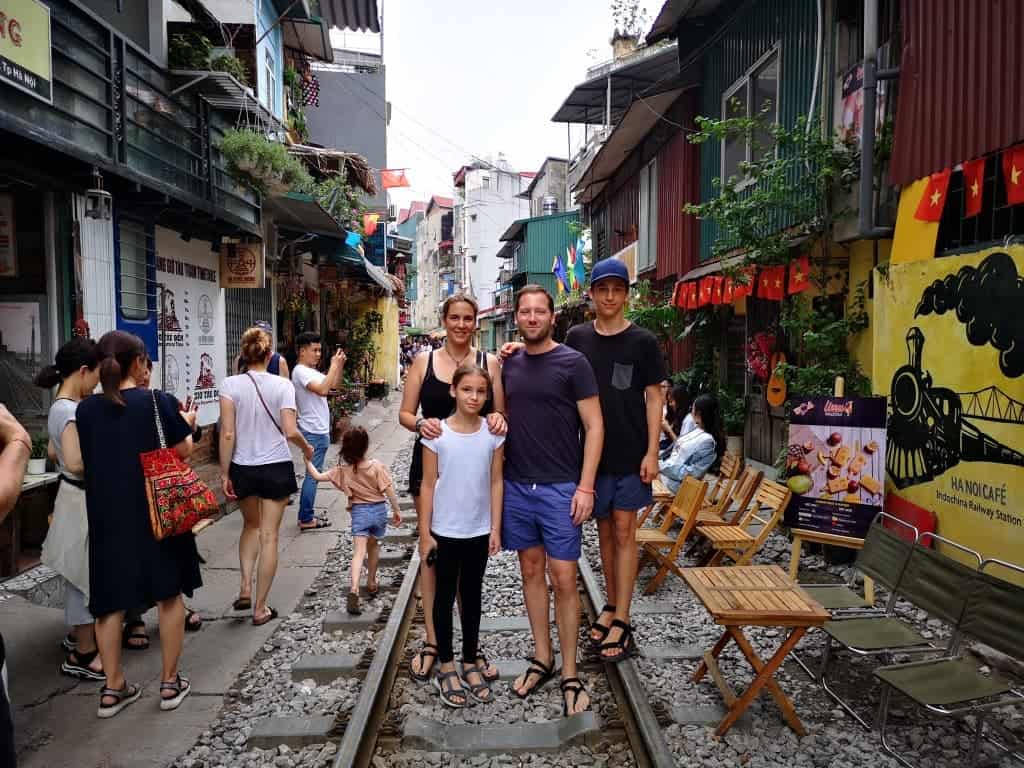
Halong Bay is a UNESCO World Heritage Site , and is one of the most popular things to see in Vietnam.
The stunning bay is full of thousands of limestone islands, pristine beaches, caves, and floating villages. The Vietnamese call it The Bay of the Descending Dragons.
One of the best ways to visit the islands is by boat.
You can take one of the many cruises on offer from the tour operators in town, taking you from Hanoi to Halong Bay, spending a night onboard a boat, and returning you to Hanoi the following day.
Alternatively, make your own way to Halong Bay, and arrange a boat from there.
Halong Bay cruise options vary depending on your budget.
The cruises normally include kayaking, stand up paddleboarding, swimming, visiting floating villages, and exploring caves.
If you find the Halong Bay cruises a little out of your budget, check out this guide to Halong Bay on a budget .
Where to stay in Ha Long Bay: Spend the first night at Halong bay, preferably on board a junk boat. Alternatively, spend the night on Cat Ba Island . Return to Hanoi, and spend the second night there, ready to head to Sapa in the morning.
After a restful night in Hanoi after your cruise, and having enjoyed some more Bun Cha and fresh beer, it’s time to get on a bus from Hanoi to Sapa.
You can also travel by train if you prefer, but buses are the fastest and the best way to get to Sapa from Hanoi.
Alternatively, you can hire a private car, which will get you there faster, but at considerably more expensive.
Sapa is a region in Vietnam’s northwest and is home to beautiful terraced rice fields, great trekking, and exquisite vistas.
Sapa has some of the best trekking in Vietnam .
You can navigate some of these hikes yourself, arrange a private guide, or organize one of the many tours, either from Hanoi or in Sapa itself.
The most popular attraction in Sapa is the highest mountain in the region, Fan Si Pan .
But unless you take the cable car to the top, you’ll need more time in the area for this hike.
Some of the shorter day hikes are Cat Cat, and Tả Phìn , which can be done with or without a guide.
Where to stay in Sapa: Spend two nights in Sapa. Consider a mountain lodge for the true Sapa experience, and then hop on the bus back to Hanoi early the following day. Then fly from Hanoi to Hue. If you would prefer not to fly, you can take an overnight train or bus from Hanoi to Hue instead, arriving in the morning of Day 7.
Hue is the old Imperial City, and is where the Nguyen Dynasty held the throne for 143 years.
The last Emperor, Bao Dai, abdicated his throne and power passed to Ho Chi Minh.
During the American War, the North Vietnamese Army captured Hue as part of the Tet Offensive.
Thus began a battle to regain the Imperial city by the South Vietnamese and the Americans, which lasted almost a month with thousands dead, and the city was mostly destroyed.
After spending the previous night in Hue, or arriving in the morning by bus or train, visit the Old City with its pavilions, beautiful temples, and the Royal Palace , all protected by high walls, exquisite gates, and moats.
Hue is also known for the tombs of the Ancient Emperors. They are all intricate and beautiful.
But don’t miss the Tomb of Tu Duc , or a visit to Tu Hieu Pagoda , which dates back to 1843.
One of the last things to do in Hue is to try the famous Bún Bò Huế , a local noodle dish with beef and chili oil, washed down with fresh beer.
Where to stay in Hue: Spend another night in Hue, then head off early on Day 8 to Hoi An. The most spectacular way is on a motorbike tour through the Hai Van Pass. The operators will take you on the back of a motorbike, and deliver both you and your luggage to your hotel in Hoi An.
Alternatively, you can take a private car or bus.
READ MORE: Learn more about what to do in Hue with our Hue city guide .
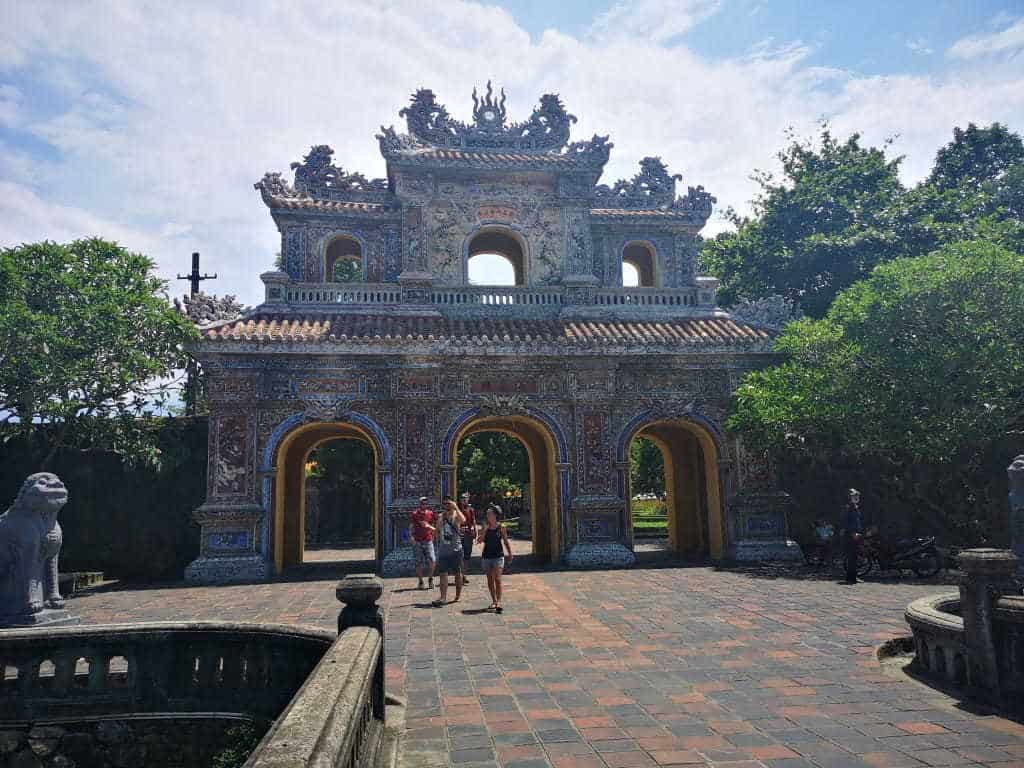
Explore the beautiful city, and enjoy some rest and relaxation at the beach, sitting on beach chairs and drinking cold coconuts.
The old town is simply stunning. As you walk around you’ll pass stores selling little souvenirs, great restaurants, and lots of clothes.
Hoi An is the place to be if you want to have some clothes made. Tailors are everywhere, and prices are affordable.
Make sure to head out into town at night, as the city lights up with hanging lanterns, and comes alive with markets, street food, and people.
While out and about visit the wooden Japanese Covered Bridge from the 18 th Century, and take a boat ride up the river to get a better view of the lights.
Use Grab or take a taxi or scooter and head to the beach. You can sit at one of the many restaurants, use their lounge chairs and stay all afternoon soaking up the sun!
Where to stay in Hoi An: Spend the night in Hoi An, and fly from nearby Da Nang to Ho Chi Minh City the next morning.
READ MORE: Add these things to do in Hoi An to your itinerary !
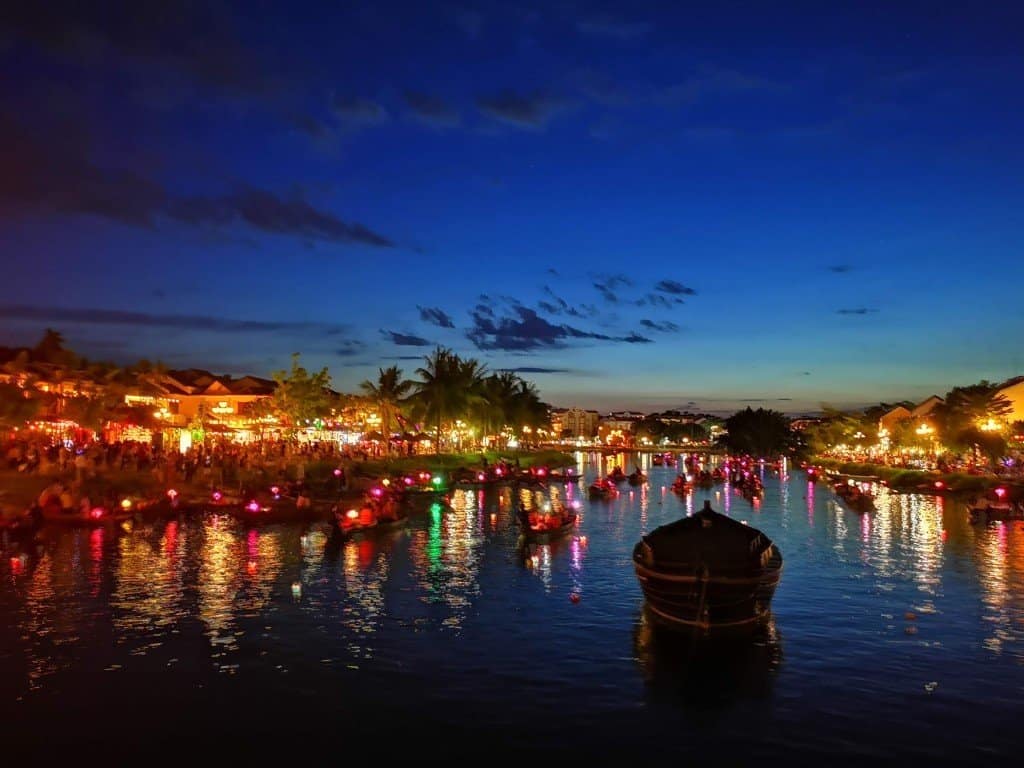
After experiencing incredible Hoi An, it’s time for one last big effort as we reach the home stretch of our 10-day itinerary.
Our time allows for one of two tour options, or if you have an extra day, both.
Vietnam’s largest city, Ho Chi Minh, is a bustling array of buildings, people, food and scooters!
Saigon is where a lot of ex-pats live as it offers so much variety and, like New York, the city never sleeps!
These are your last couple of days in Vietnam, and there is plenty to see. The Vietnam War Museum, Notre Dame (yes they have one too!), the beautiful Central Post Office, and Independence Palace are all must-see destinations while in HCMC.
One of the things to do in Ho Chi Minh City is to head to Bui Ven Walking Street , where all the action happens.
After dark, this street is packed with people sitting at small plastic tables and chairs sinking beers, eating street food, and people-watching.
After a few beers and some food, head back to your hotel and get some rest before your flight home.
READ MORE: Consider these 8 day trips from Ho Chi Minh City .
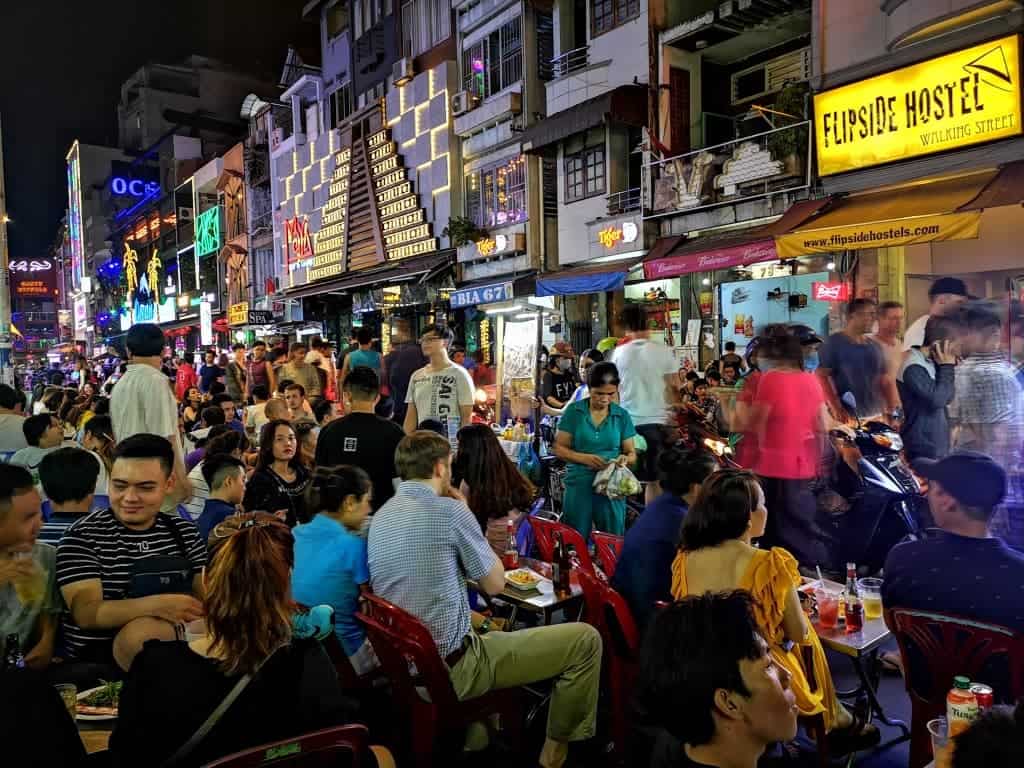
The Cu Chi Tunnels
Even if you’re not particularly interested in Vietnam’s war history, this is an interesting place to visit.
There are two different locations, Ben Dinh and Ben Doc .
Most tour companies usually head to the one closest to the city, Ben Dinh, which is also the largest.
The Tunnels offer an interesting insight into what it was like for the people fighting in the Vietnam/American War, their living conditions, and how they used the tunnels to hide underground during the day and fight the enemy at night.
Today you can go into some of the tunnels, which have been widened for westerners to fit in.
You can only visit the tunnels with a guide, which is provided as part of the entry ticket or part of your tour .
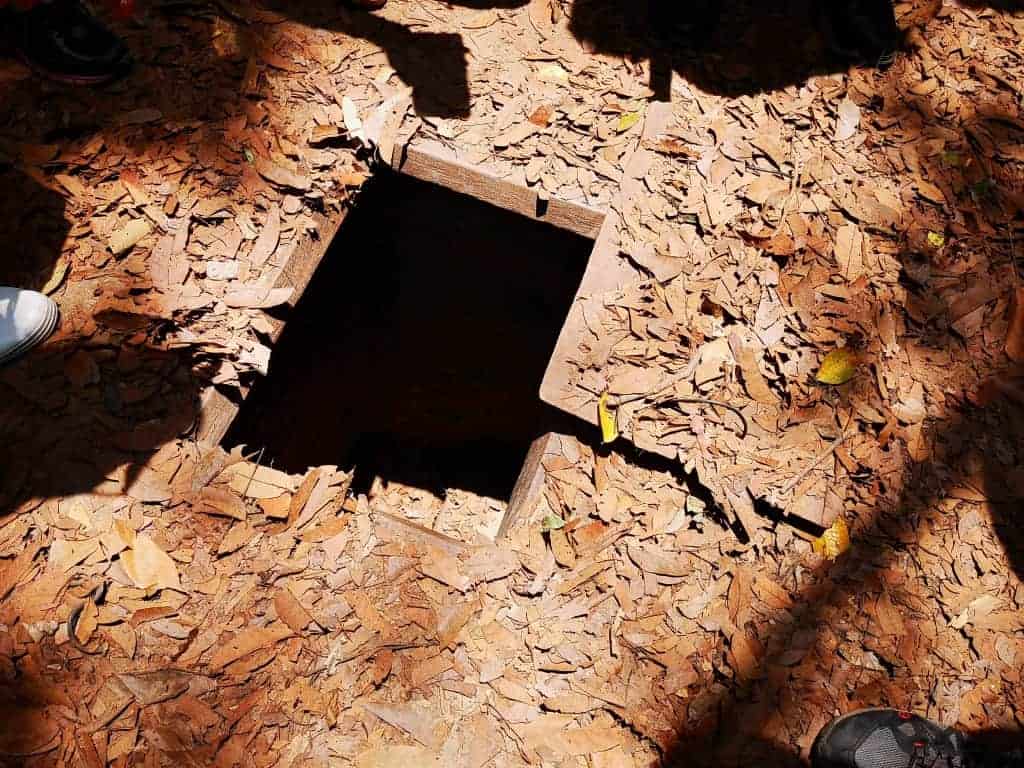
The Mekong Delta Tour
If small little tunnels aren’t your thing and you would prefer to take a pleasant boat ride down the Mekong river instead, there are half-day tours available from Ho Chi Minh City to the Mekong Delta.
Mekong Delta tours usually include exploring small canals by a sampan boat, visiting villages and islands, sampling exotic fruit and touring a coconut candy farm. Yum!
Where to stay in Ho Chi Minh City: For your two nights in Saigon, stay in District 1 to be right in the middle of everything, District 3 if you’d like a more relaxed stay that’s still only moments away from the action or District 4 for a real local experience.
Extension Option
If you’re able to extend your tour to 2 weeks in Vietnam, you’ll have more time for these excursions. Any 2 week Vietnam itinerary should include these!
Da Nang has lots to offer . If you are comfortable on a scooter or motorbike, you can ride from Hue to Da Nang (before going to Hoi An), through the Hai Van Pass .
This route used to be a little dangerous due to all the cars and trucks using the pass.
But since they have built the new freeway and tunnel there is very little traffic, making it a very enjoyable and incredibly scenic ride.
The best way to do this is by motorbike tour from Hue, to either Da Nang or to Hoi An, or in reverse.
Setting out from Da Nang, Ba Na Hills is a scooter ride away. You may recognize the bridge seemingly held up by two large hands.
Between Da Nang and Hoi An lies Marble Mountain , and to the east of Da Nang there’s a large Buddhist temple complex and pagoda called Chua Linh Ung .
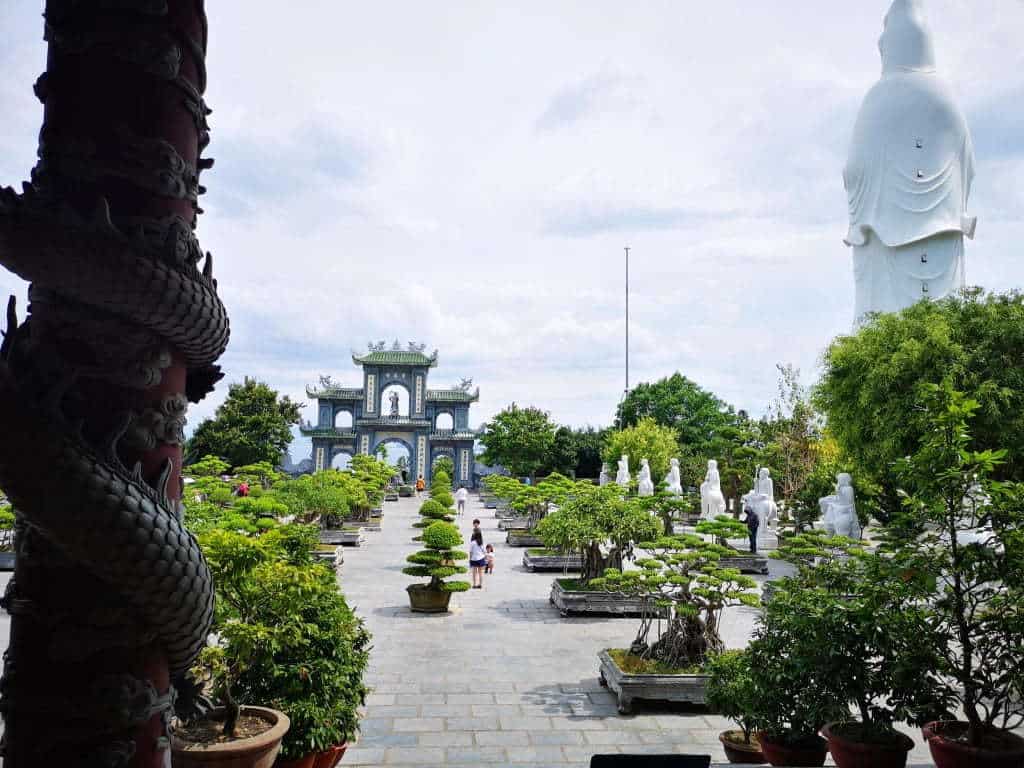
If you have longer in Vietnam and would like to explore more of this beautiful country, combine our North and South options below to create a 2 weeks in Vietnam itinerary.
2 Week Vietnam Itinerary – 1 Week in the North
Start your 2 weeks in Vietnam in Hanoi, Vietnam’s capital city, with beautiful architecture, culture, and food.
While in Hanoi don’t forget to try egg coffee, fresh beer (Bia hơi), and especially the regional dish of Hanoi, Bun Cha . (See Above 10-day Vietnam Itinerary)

Where to stay in Hanoi: Spend the night in Hanoi. We recommend staying right in the Old Quarter.
Ha Long Bay, with its beautiful limestone islands, is on the UNESCO World Heritage List.
It’s a must-see while in Vietnam, with an overnight boat tour to the islands, and other fun activities like SUPing, kayaking, and exploring caves.
The easiest way to see Ha Long Bay is to organize a tour from Hanoi . (See Above 10-day Vietnam Itinerary)
Where to stay in Ha Long Bay: Spend the first night at Ha Long Bay, preferably on board a junk boat. Alternatively, spend the night on Cat Ba Island . Return to Hanoi, and spend the second night there, ready to head to Sapa in the morning.
Think of beautiful rice terraces set high up in the mountains, trekking, and staying in mountain lodges.
Sapa is located in the northwest part of the country, and best seen by a two-day tour from Hanoi. (See Above 10-day Vietnam Itinerary)
Where to stay in Sapa: Spend two nights in Sapa. Consider a mountain lodge for the true Sapa experience, and then hop on the bus back to Hanoi early the following day. Then fly from Hanoi to Hue.
If you would prefer not to fly, you can take an overnight train or bus from Hanoi to Hue instead, arriving in the morning of Day 7.
The old imperial city still has many secrets to uncover.
Hidden behind towering walls and large gates, you can explore where the last Emperor ruled from before abdicating his rule in favor of Ho Chi Minh.
This is where the North Vietnamese overtook the city, sparking a battle that lasted for almost a month in what was known as the Tet Offensive. (See Above 10-day Vietnam Itinerary)
Where to stay in Hue: Spend the night in town. Leave your bags at your hotel while you explore the city the next morning, then head to Hoi An after lunch.
The most spectacular way is on a motorbike tour through the Hai Van Pass . The operators will take you on the back of a motorbike, and deliver both you and your luggage to your hotel in Hoi An.
Head to the beach during the day and relax on one of the many lounge chairs offered by the restaurants lining the foreshore of Central Vietnam.
In the evening enjoy the magical old town that comes alive at night with lights, markets, food, and more! (See Above 10-day Vietnam Itinerary)
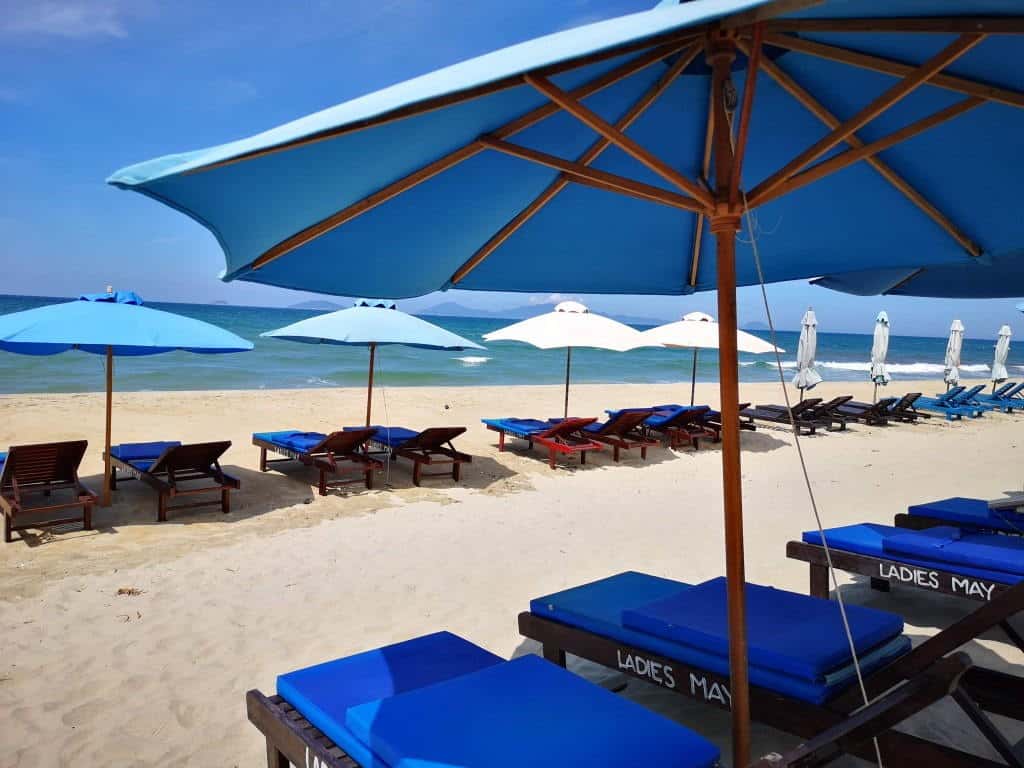
Where to stay in Hoi An: Spend the night in Hoi An, and fly from nearby Da Nang to Ho Chi Minh City, or head to Nha Trang to link up with the Southern Vietnam Itinerary below.
READ MORE: Add these things to do in Hoi An to your 2 week Vietnam itinerary!
Extension Options
If you want more time in the north during your 2 week Vietnam itinerary, add on these trips such as Ninh Binh and some cool national parks.
Considered the inland version of Halong Bay, Ninh Binh is best seen by boat, on a pushbike, or scooter.
We spent two full days in Ninh Binh and enjoyed a pushbike ride in the surrounding area.
We then hired a scooter in Ninh Binh and set out to see more of the beautiful lush hills, taking a boat ride through Tam Coc, and visiting pagodas.
You can easily book an awesome 2-day, 1-night tour of Ninh Binh from Hanoi if you’re not comfortable riding a scooter in the crazy Vietnam traffic.
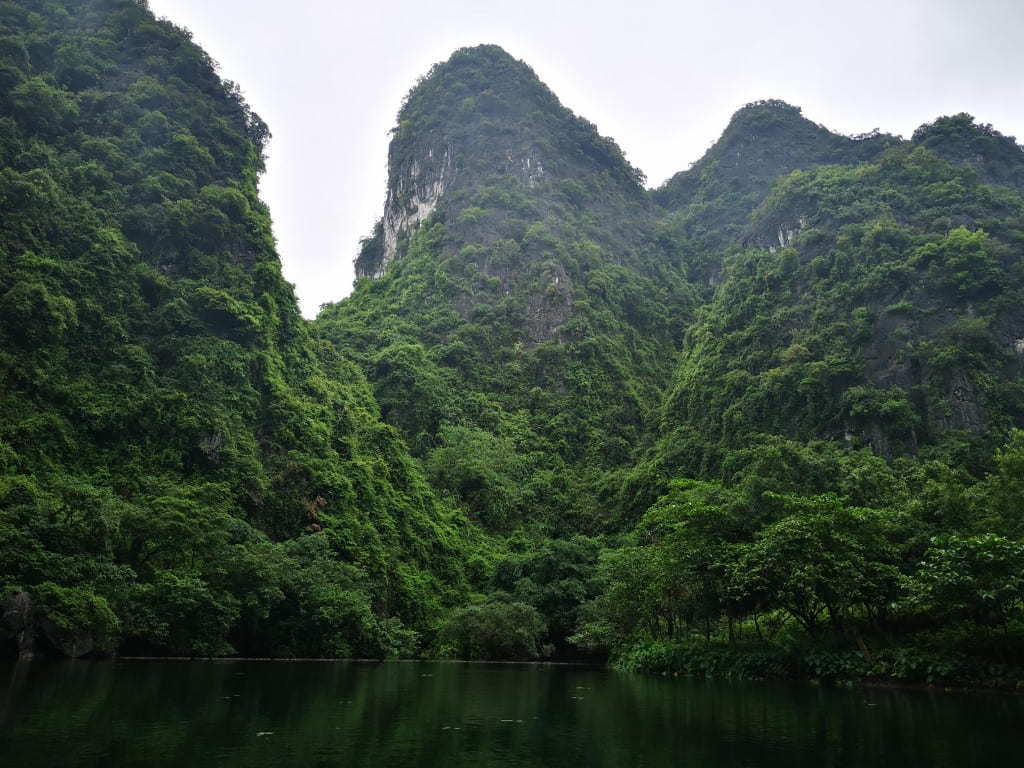
Phong Nha – Ke Bang National Park is home to over 300 caves and grottoes. This UNESCO World Heritage Site protects the oldest karst system in Vietnam.
It comprises of a precious ecosystem, limestone forest, and the world’s largest cave, Son Doong .
The park offers eco-tourism, mountain climbing, trekking, flora and fauna, and caving.
Some of this can be done independently, but tours are often the best option to get the most out of your time.
The My Son ruins are another important UNESCO World Heritage site in central Vietnam.
This temple complex was built by the Champas during their rule, and was influenced by Hinduism.
The ruins of the brick temples and sculptures are often likened to Angkor Wat in Cambodia or Bagan in Myanmar.
Book a tour of My Son to make the most of your experience.
Ba Be Lake is the centre of the National Park, and of the Ba Be Lake legend.
People believe that the lake was formed by an enchantress, who cursed the people of the surrounding area for not showing compassion to her when she asked for help.
Legends aside, Ba Be Lake offers a wide range of activities, from trekking, kayaking, motor-biking, waterfalls, caves, and the natural beauty and diversity of the area.
The highest point of Bach Ma National Park is the 1450m high mountain of the same name.
The park is known for its biodiversity, with lots of birds, flora, mammals, and primates.
The government finally protected the area in 1962, after the area was greatly damaged due to the use of agent orange during the Vietnam War.
The area is now safe for people to explore and is best seen with a tour guide .
You can hike the Five Lakes Cascade Trail taking in the waterfalls, visit the monastery, and hike the Pheasant Trail .
A visit to the demilitarized zone (DMZ), is a great one-day outing for history buffs.
The DMZ area was the dividing line between North and South Vietnam during the war, and as a result, saw heavy fighting.
The tour explains the extent of the fighting in this area, and the importance of the location in the Vietnam War.
2 Week Vietnam Itinerary – 1 Week in the South
Next on your 2 weeks in Vietnam, spend 1 week in the south of Vietnam. You could easily spend 2 weeks in Vietnam in just the north or the south, but you can also spread out your time between both areas.
Our Southern itinerary begins in Nha Trang. Either fly there from Saigon or Hanoi, or take a bus down from Hoi An if you’re continuing on from our Northern Itinerary.
Nha Trang is the most famous seaside resort in Vietnam and is known for its white-sand beaches, coastal islands, and clear waters with abundant marine life, making it perfect for scuba diving and snorkelling.
The town itself also offers interesting cultural sites close by, and places where you can pamper yourself with a mud-bath, or enjoy a seafood dinner.
Where to stay in Nha Trang: Spend a night in Nha Trang, and take a bus or private car to Dalat the next morning.
After a relaxing time on the beach, it’s time to get some more culture in during your 2 week Vietnam itinerary!
Dalat is heavily influenced by the colonial period from the French occupation, as the French built their holiday homes here to take advantage of the temperate weather.
With beautiful buildings, gardens, interesting architecture, coffee and tea plantation tours, waterfalls, mountain biking, hiking, and canyoning , you don’t want to miss out on this city!
Where to stay in Dalat: Spend the night in Dalat, and take a bus or private car to Mui Ne the next morning.
READ MORE: Learn more about what to do in Dalat with our Dalat city guide .
Three main things are offered in this beautiful resort destination; relaxation, watersports, and sand dunes.
Mui Ne beach is dotted with resorts, hotels, and hostels, and is a great place to just sit and enjoy your surroundings.
Although Mui Ne is more than just the beach, this area is set up for tourists and has one main street of shops, cafes, bars, and shopping.
Being a beach town, watersports are a big thing here, and just about everything is on offer from kitesurfing to parasailing.
The Mui Ne sand dunes are popular, and a spectacular sight.
There are two locations, the smaller, closer, red sand dunes, and the white sand dunes about 26km from town.
Tours are available for both locations and you can also hire dune buggies, or go sledding!
Where to stay in Mui Ne: Spend a night in Mui Ne, then shake the sand from your belongings and take a bus or the train to Ho Chi Minh City (Saigon) the next morning.
There’s so much to see and experience in this historic city, including day tours to some pretty important locations, that you’ll need two days .
On the first day, you’ll head out into Ho Chi Minh City. It has some great cultural sites, like the Vietnam War Museum, Independence Palace, Notre Dame, and it also boasts some pretty great nightlife too.
For the second day, we suggest you head out of the city on a day tour. There are two great options: The Chu Chi Tunnels, or a trip to the Mekong Delta. (See Above 10-day Vietnam Itinerary)
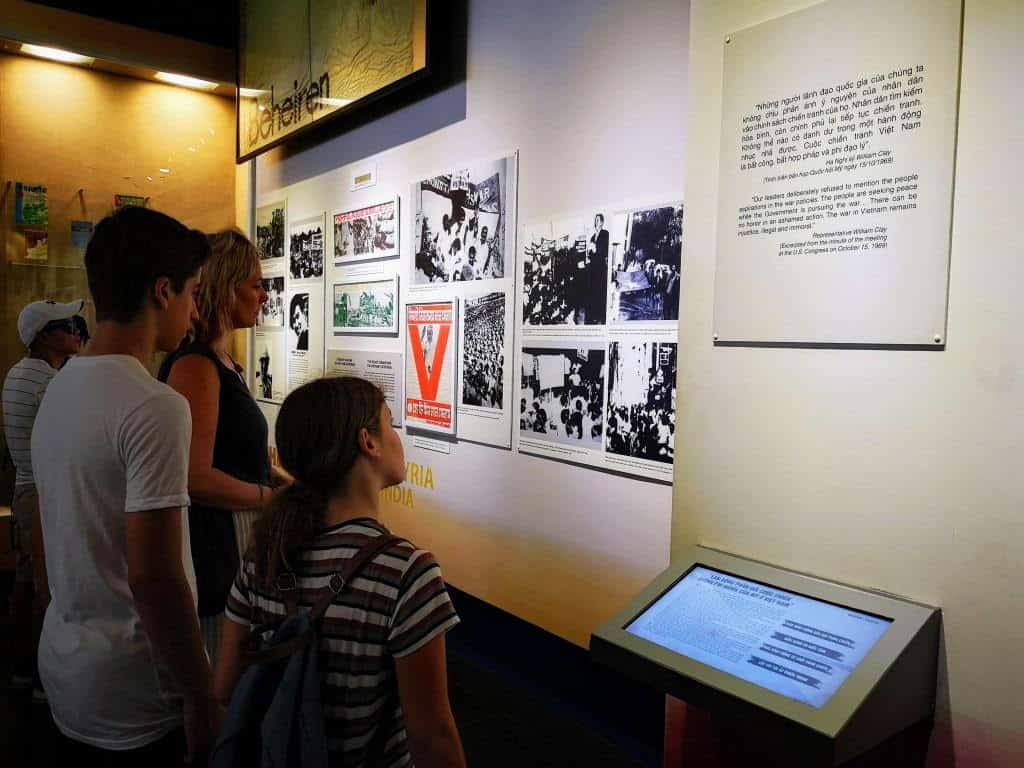
Where to stay in Ho Chi Minh City: For your two nights in Saigon, stay in District 1 to be right in the middle of everything, District 3 if you’d like a more relaxed stay that’s still only moments away from the action or District 4 for a real local experience. Fly to Phu Quoc Island on Day 6.
Phu Quoc is a small island off the coast of Cambodia, lined with white sand beaches and palm trees.
There are many resorts along the southwest coast providing you with ample opportunity for some relaxation time, while you swim, and eat your last fill of tasty Vietnamese food.
Phu Quoc island is home to mountains, tropical rainforest, hiking and wildlife, all within its National Park.
Lots of tours are available to explore the island which offers snorkelling as well, or you can hire a scooter and set off by yourself.
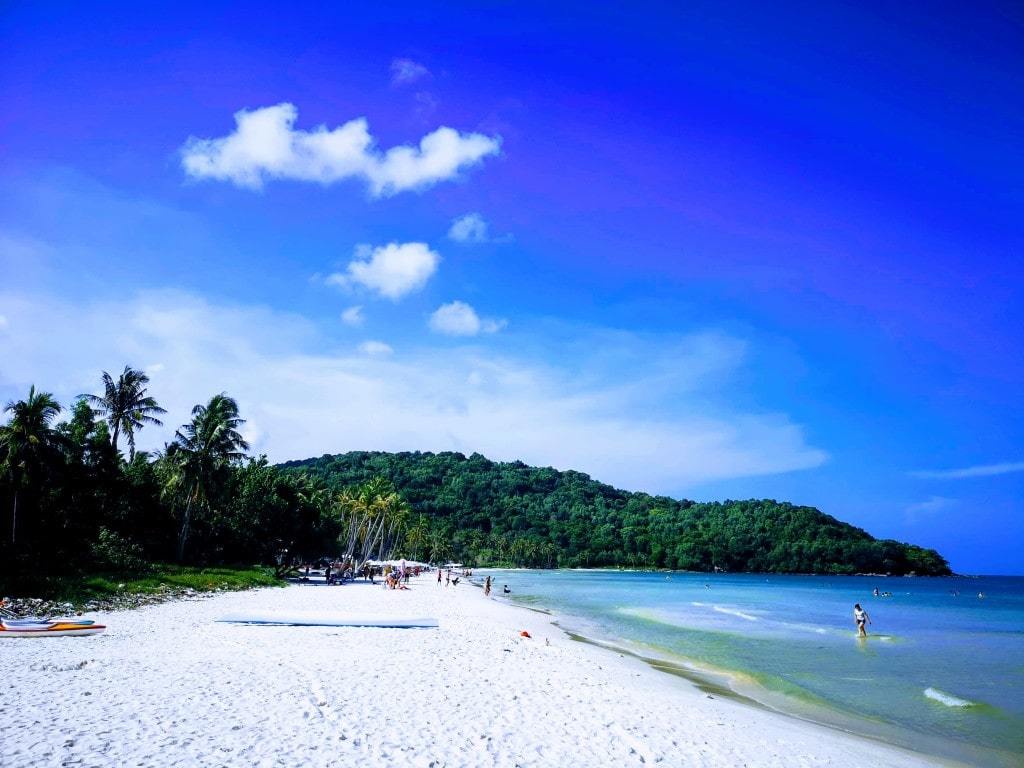
Where to stay in Phu Quoc Island: Spend two relaxing nights on Phu Quoc Island, then fly back to Saigon to catch your onward flight!
If you have more time to spend during your 2 weeks in Vietnam, take the ferry to the mainland, and continue overland to some of the extension options listed below, or to Cambodia.
If you have more time for your 2 week Vietnam itinerary, or you want to further explore one area rather than hopping around, here are some ideas!
Depending on what you did in 7 days for our Southern Vietnam Itinerary, if you have time you might like to see the other option best explored out of Ho Chi Minh City. (See Above 10-day Vietnam Itinerary)
During the French occupation, and later the Saigon regime, this island was used to house political prisoners and prisoners that were considered especially dangerous.
Aside from its harrowing past, the island is known for its natural beauty with over 80% of the island being a National Park.
These days the island is frequented for its spectacular snorkelling and diving, with abundant coral reefs, beautiful beaches, and hidden lagoons.
Can Tho is the de facto capital of the delta region and an unassuming city full of life.
Most of the activity happens around the pier where you can enjoy great food and cold beer.
Boat rides are available to show you more of the city and surrounding area, and visit some early-morning markets.
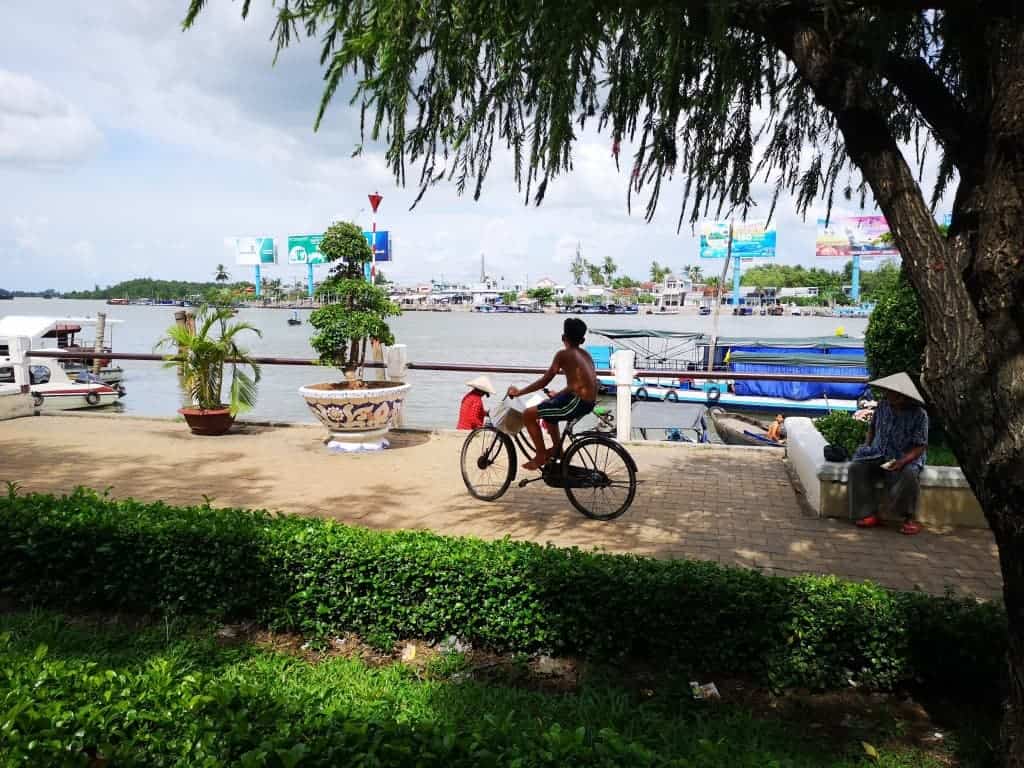
If you’d like a little break from the tourists and are looking to just relax and hang out with the locals, Qui Nhon is the place to come .
Unspoiled by tourism, this sleepy town has squeaky white sand beaches, snorkeling, swimming, temples, and museums.
Cat Tien National Park is comprised of two sections Cat Loc, and Nam Cat Tien, the former being the most visited of the two.
The river by Nam Cat Tien houses an important Hindu archaeological site and temple, where a large number of artifacts have been uncovered and are now in the Dalat museum.
The national park has spectacular flora and fauna and trekking.
READ MORE: 33 amazing things to do in Vietnam !
Vietnam is a large and diverse country, with a great deal to offer the traveller who goes in with an open mind and heart.
While we’ve listed what we feel are the main highlights, there is much more to be explored when you visit Vietnam.
Friendly people really make Vietnam a special place to visit.
The itineraries listed above are a bare minimum if you need to get the most out of a short amount of time.
While doable, if possible it would be a much more relaxing trip if you could pad it out by adding a few days to your Vietnam itinerary, and slow down a little!
We hope you have a wonderful time there!
DISCLAIMER: Some of the links in this article are affiliate links, which means if you book accommodation, tours or buy a product, we will receive a small commission at no extra cost to you. These commissions help us keep creating more free travel content to help people plan their holidays and adventures. We only recommend the best accommodations, tours and products that ourselves or our fantastic editorial team have personally experienced, and regularly review these. Thanks for your support, kind friend!
Hi, We’re Alesha and Jarryd!

We’ve been traveling the world together since 2008, searching for the planet’s best destinations and adventures.
Love Travel?
Sign up for our free weekly newsletter for the best travel tips, ideas and deals!
We respect your privacy. Unsubscribe at any time.
READ MORE...
25 BEST Things to Do in Hue, Vietnam (2024 Edition)
Canyoning In Dalat – What It Is Really Like
A First-Timer’s Guide to Trekking in Sapa
Related Posts
The 11 best things to do in da nang, vietnam (2024 guide), caves, zip lines and deep mud in phong nha, 25 amazing things to do in hanoi, vietnam (2024 guide), from caves to farmland – mountain biking in phong nha, 1 thought on “the perfect vietnam itinerary for 1, 2, or 3 weeks”.
Hi, I was wondering how much the 10 day option costs roughly in AUD? Cheers!
Leave a comment Cancel reply
Save my name, email, and website in this browser for the next time I comment.
What to wear in Vietnam

Weather in Vietnam varies considerably, so what you wear is dependant on the time of year you visit and where you go. Dress standards can be more conservative outside of major cities in Vietnam. To respect this, and for your own comfort, we strongly recommend wearing modest clothing. This means clothes that cover your shoulders and knees, particularly in pagodas and religious sites. In many rural areas, women will need to wear modest clothes, even while swimming. Consider bringing a sarong, which conveniently doubles as both a cover-up and a blanket.
Summer months can be incredibly hot and sticky, so loose, lightweight and breathable clothing is essential. While linen and cotton are good options, cotton in particular does not dry well in high humidity. Athletic wear designed to absorb sweat and stay dry is a better option for humid days. Remember that short shorts, crop tops and tank tops are not considered appropriate in Vietnam. Loose, long clothing is both respectful and tends to keep you cooler in hot climates.
Southern and central cities, such as Ho Chi Minh City and Hue, are warm year-round, with temperatures rarely dropping below 20°C, however, the temperature does drop as you go further north. Pack a light jacket, hoodie or fleece for travel to Hanoi and Halong Bay between November and March.
January is typically the coldest month, when temperatures drop as low as 13°C. It gets particularly cold in Saba from November to February, when temperatures can dip near the freezing mark. Pack a warm jacket, layers, gloves and beanie to stay warm for trips during this time.
Good quality, comfortable footwear is best for hiking. Paths can be uneven, rocky, slippery and muddy depending on the season, so waterproof, worn-in walking boots or shoes with good grip are recommended. A raincoat is also a good idea during the rainy season.
When traveling to Vietnam or other neighboring Southeast Asian countries, your packing list will vary based on the time of year you decide to travel.
Loose, breathable clothing that covers your knees and shoulders. Athletic wear is recommended for particularly humid days
Swim shorts or bathing suit
Light jacket or fleece
A hoodie plus warm layers are recommended for the evening during cooler months (especially if traveling to Northern Vietnam )
Warm jacket, gloves and beanie if traveling to Saba between November and February
Comfortable walking shoes
Reusable water bottle
See our ultimate packing list for a more comprehensive list of items you should bring on your trip to Vietnam.
Read more about the weather in Vietnam
Let's create an exclusive trip for your group.
- _Cuti-Cuti Malaysia
- _Staycation

[Vietnam BFF Trip] 闺蜜装How to plan BFF OOTD for BFF trip!?
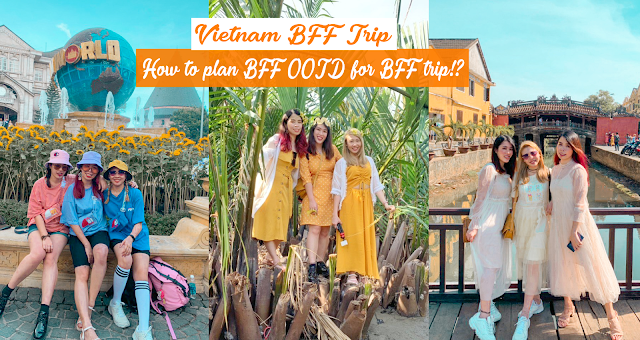
Choose color contrast with the venue
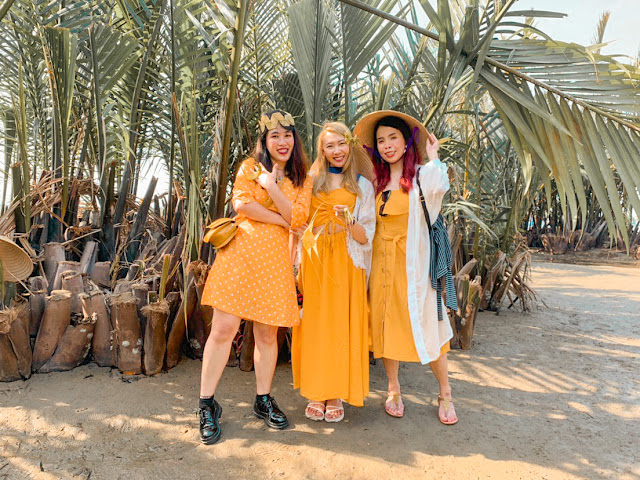
Pick one color from the Venue

Same Design with Different Color

Minimalism is the key!

Add your comment
Total pageviews.

Featured Post
Popular posts.
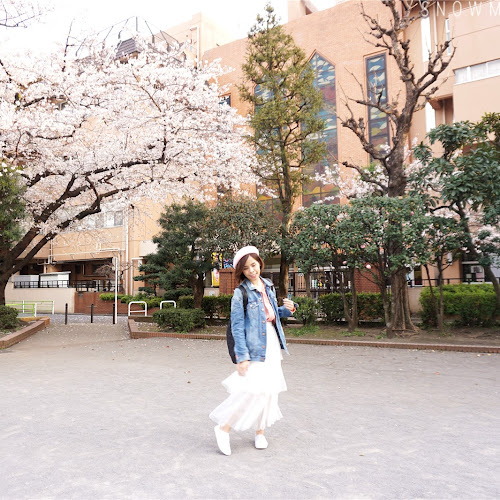
Day 1 Tokyo Skytree @ Asasuka, Tokyo Japan

COACH Airways at Freeport A'Famosa Outlet, Malacca

EVITA Beauty Whip Soap
Contact form.
- South Korea
- United Kingdom
- United States
- Philippines
- Travel & Kids
- Travel Tips
- Travel Stories
- How We Homeschool
- Curriculum Reviews
- Lessons & Activities
- Book Lists for Kids
- All Homeschool Articles
- Free Downloads
- Kids’ Rooms
- Kids’ Parties
- Illustrations
Anatomy of My Travel OOTD
One of the things I’m most excited about pre-trip is planning my OOTD’s! I’m definitely no fashion blogger and I have never been experimental when it comes to dressing up, but I really enjoy planning what to wear, especially when I travel.
Sometimes, I like dressing according to theme (more on that next time) but most of the time, I go for simple, basic, practical pieces that I can wear again. Here’s a list of my travel wardrobe staples and why I love them!
1. Basic Shift Dress
Lately I’ve been obsessed with shift dresses. I actually want to overhaul my closet and sell all my other dresses that are not shift dresses. Haha! (But I’m holding that off because it could just be a phase!) Reasons why I love them:
- They look good both in sneakers and in flats
- Plain shift dresses can be worn again and again
- You can dress it up in different ways, depending on your accessories
- They’re light to pack since it’s a top and a bottom in one!
2. Floppy Hat
I’ve overused this floppy hat but I really like it a lot, even if it sometimes makes me look like a certified tourist. Haha! I like this hat in particular because no matter how bad I pack it (I just usually stuff it in), it still looks fine when I take it out of my bag!
I’ve already forgotten where I bought this though because I’ve had this for years!
3. Fleece Lined Duffle Hoodie
I love big trench coats so much but sometimes, they’re just not practical to bring to places where it can be super sunny in a matter of minutes. That’s why I love my navy blue Ever New jacket. Reasons why I love it:
- Looks like a duffle coat so it’s more fashionable than a regular hoodie
- Fleece lined so it keeps we really warm
- Hooded so I’m ready for drizzles
- Easily fits my backpack, unlike trench coats
This is my go-to jacket when the weather is around 10-15 degrees celsius. I wore this almost everyday during our trip to London 2 years ago .
4. Comfy White Shoes
For travel shoes, it’s always comfort before style. But of course, it helps to get a stylish pair. I’ve written extensively about my favorite travel shoes here . These GoWalk pair is seriously my currently favorite. Plus, I got mine in white because they match everything!
5. Black Boots
When the weather’s colder, I like wearing boots. They look extra nice when paired with tight black leggings. I only own one pair and it’s this black one from Payless. I’m a believer of buying nice, good quality clothing items regardless of their brand!
My boots and I have been around the world together; from exploring the cobblestone streets of Madrid, to walking around London and even dancing in Portugal. I’ve had these for more than three years now and I still plan to wear them on my upcoming trips.
6. White Bag
Ever since Mor got me this Kate Spade bag from one of his trips, I’ve been using it almost everyday. It’s my most well-loved bag to date! I love it not only because it’s white (again, matches everything!) but also because my Fujifilm XA2 can fit perfectly inside , together with all my other things!
I used to love wearing my Travelon slash-proof black sling bag but my Fuji just can’t fit in them (my old digicam was perfect there though!)
7. Backpack
When Mor and I travel, he’s the one carrying a backpack. But whenever I travel alone, I bring my own. Backpacks are very practical when you’re out the entire day so you can stuff things like water, jacket, umbrella and purchases you made along the way. Tip: I highly recommend that you DO NOT put your passport, wallet and phone on your backpack.
I love this rose gold metallic backpack from MiPac not only because it’s cute but also because it’s roomy and sturdy. I also like that it’s comfortable on my shoulders.
8. Sunglasses
Sunglasses are the perfect, low maintenance accessory. They are light to pack and you can change styles easily. I sometimes bring more than a pair so I can have different looks. In fact, I have a whole bunch of these sunglasses from Fly Shades . Because they’re pretty affordable, I have them in different shapes and colors to match my outfit. My current favorite though are these gold rimmed ones because they look so classy and chic!
Travel OOTD Tips:
I’m no fashion expert. But if we share similar tastes then you can adopt these tips as well:
- Go for neutrals: They give you more flexibility to mix and match and they almost always match your surroundings. You don’t have to worry about “clashing” too much with the background!
- Comfort over style: When you travel, you’re gonna be busy walking and exploring a lot so make sure your outfit is one less thing to worry about.
- Don’t pack impractical pieces you can only wear once: Unless you have a lot of luggage space, then pack away. But if not, I suggest you hold off on bringing that bright pink furry coat unless you plan on wearing it multiple times. Otherwise, it will just take up too much space.
Do you have other tips you wanna share? What are your travel OOTD staples?
Sheena Sy Gonzales
Sheena is a travel writer, designer, homeschooling advocate, wife and a mom. She hopes to inspire people to go and see the beauty of God's creation first hand so that they will stand in awe and praise Him alone (and that includes the little ones!)
You Might Also Like
Is a sweet escape family travel photoshoot worth it, lake pandin with kids (laguna, philippines), strawberry picking (baguio, philippines), 15 comments.
I usually bring a scarf with me because it adds a little something to my outfits and it helps keep me warm, too! But basically these are the things I live by too when planning for my travel outfits. Wouldn’t have any problem with the colors because my closet is full of black and white pieces! Hahaha.
http://pepperonipia.com
Monique Galang
You even have a nice ootd during your trips! Hehe. You can add up an ootd post at the end of your travel post! 😉
I’m also obsessed with shift dresses, but unfortunately it’s way too cold in Hungary to wear them in the fall. That hat looks so cute on you, everything is so pretty on your list! Thank you for sharing and have a wonderful day!
http://bubblesther.com
I love Monique’s idea to add a ootd post to each of your trips! Great tips for travel outfits. I”m a huge fan of shift dresses for traveling. They are so easy and go great with preppy sneakers, so you can still be comfy exploring
Carly at A Modern Mom Blog
I know right? Looove shift dresses. I need to get more! Hehe.
Filipa Jackson
Loved this post darling
Filipa xxx PlayingWithApparel.com | Instagram
Great travel outfit tips, doll! Love the snaps!
-Ashley Le Stylo Rouge
Thanks Ashley!
Zunera Serena
Nice collection of shirt dresses. Thanks for sharing! http://zunera-serena.com/
Thank you Zunera!
Rochelle Dianne Pentinio
Thanks for the ootd idea! I might recreate this looks as well for my next trip. Hihi – IG: @rochellepentinio
Glad to help!! Welcome!!
Leave a Reply Cancel Reply
Sign me up for the newsletter!
You are using an outdated browser. Upgrade your browser today or install Google Chrome Frame to better experience this site.
Vietnam Traveler View
Travel health notices, vaccines and medicines, non-vaccine-preventable diseases, stay healthy and safe.
- Packing List
After Your Trip
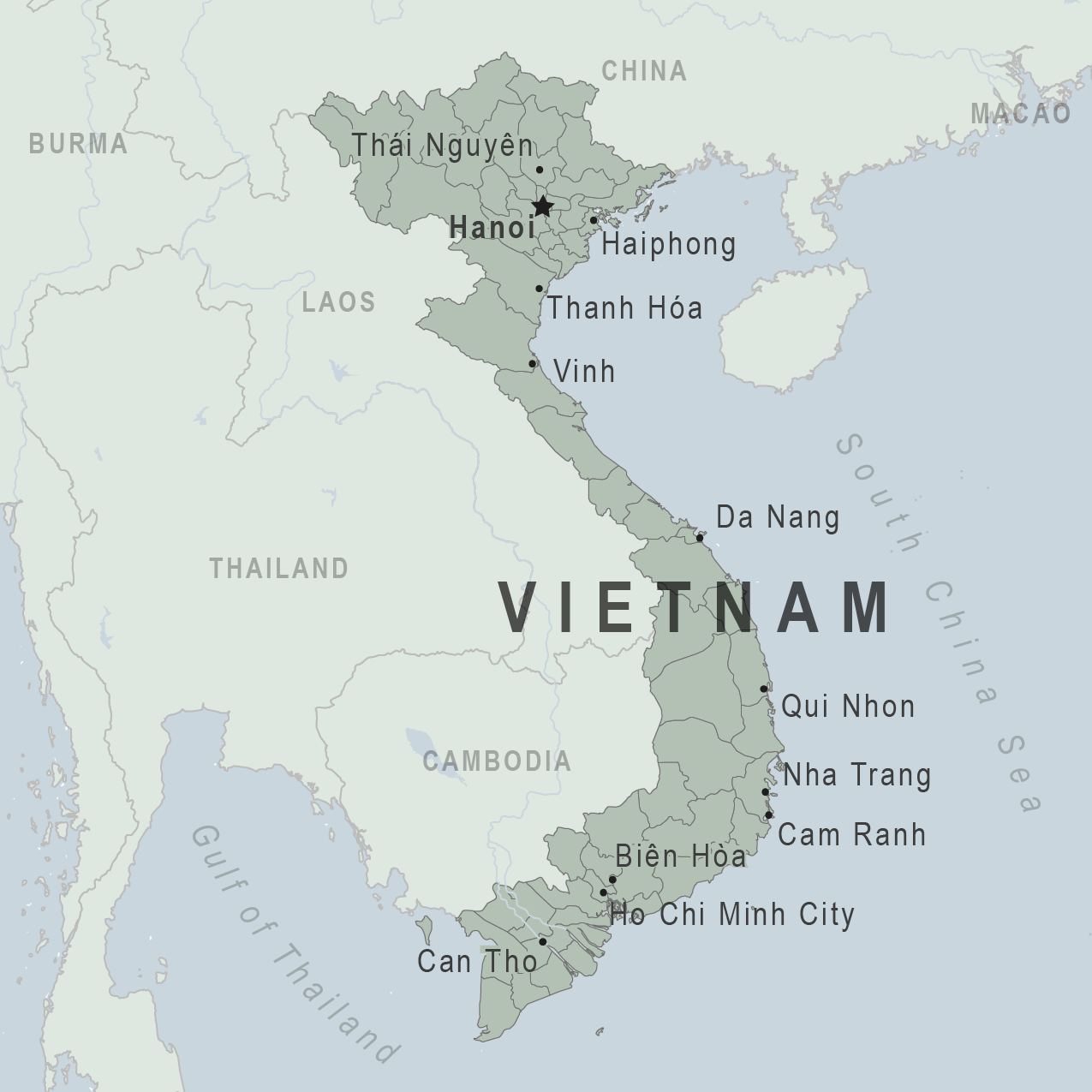
There are no notices currently in effect for Vietnam.
⇧ Top
Check the vaccines and medicines list and visit your doctor at least a month before your trip to get vaccines or medicines you may need. If you or your doctor need help finding a location that provides certain vaccines or medicines, visit the Find a Clinic page.
Routine vaccines
Recommendations.
Make sure you are up-to-date on all routine vaccines before every trip. Some of these vaccines include
- Chickenpox (Varicella)
- Diphtheria-Tetanus-Pertussis
- Flu (influenza)
- Measles-Mumps-Rubella (MMR)
Immunization schedules
All eligible travelers should be up to date with their COVID-19 vaccines. Please see Your COVID-19 Vaccination for more information.
COVID-19 vaccine
Hepatitis A
Recommended for unvaccinated travelers one year old or older going to Vietnam.
Infants 6 to 11 months old should also be vaccinated against Hepatitis A. The dose does not count toward the routine 2-dose series.
Travelers allergic to a vaccine component or who are younger than 6 months should receive a single dose of immune globulin, which provides effective protection for up to 2 months depending on dosage given.
Unvaccinated travelers who are over 40 years old, immunocompromised, or have chronic medical conditions planning to depart to a risk area in less than 2 weeks should get the initial dose of vaccine and at the same appointment receive immune globulin.
Hepatitis A - CDC Yellow Book
Dosing info - Hep A
Hepatitis B
Recommended for unvaccinated travelers of all ages traveling to Vietnam.
Hepatitis B - CDC Yellow Book
Dosing info - Hep B
Japanese Encephalitis
Recommended for travelers who
- Are moving to an area with Japanese encephalitis to live
- Spend long periods of time, such as a month or more, in areas with Japanese encephalitis
- Frequently travel to areas with Japanese encephalitis
Consider vaccination for travelers
- Spending less than a month in areas with Japanese encephalitis but will be doing activities that increase risk of infection, such as visiting rural areas, hiking or camping, or staying in places without air conditioning, screens, or bed nets
- Going to areas with Japanese encephalitis who are uncertain of their activities or how long they will be there
Not recommended for travelers planning short-term travel to urban areas or travel to areas with no clear Japanese encephalitis season.
Japanese encephalitis - CDC Yellow Book
Japanese Encephalitis Vaccine for US Children
CDC recommends that travelers going to certain areas of Vietnam take prescription medicine to prevent malaria. Depending on the medicine you take, you will need to start taking this medicine multiple days before your trip, as well as during and after your trip. Talk to your doctor about which malaria medication you should take.
Find country-specific information about malaria.
Malaria - CDC Yellow Book
Considerations when choosing a drug for malaria prophylaxis (CDC Yellow Book)
Malaria information for Vietnam.
Cases of measles are on the rise worldwide. Travelers are at risk of measles if they have not been fully vaccinated at least two weeks prior to departure, or have not had measles in the past, and travel internationally to areas where measles is spreading.
All international travelers should be fully vaccinated against measles with the measles-mumps-rubella (MMR) vaccine, including an early dose for infants 6–11 months, according to CDC’s measles vaccination recommendations for international travel .
Measles (Rubeola) - CDC Yellow Book
Rabid dogs are commonly found in Vietnam. However, if you are bitten or scratched by a dog or other mammal while in Vietnam, rabies treatment is often available.
Consider rabies vaccination before your trip if your activities mean you will be around dogs or wildlife.
Travelers more likely to encounter rabid animals include
- Campers, adventure travelers, or cave explorers (spelunkers)
- Veterinarians, animal handlers, field biologists, or laboratory workers handling animal specimens
- Visitors to rural areas
Since children are more likely to be bitten or scratched by a dog or other animals, consider rabies vaccination for children traveling to Vietnam.
Rabies - CDC Yellow Book
Recommended for most travelers, especially those staying with friends or relatives or visiting smaller cities or rural areas.
Typhoid - CDC Yellow Book
Dosing info - Typhoid
- Avoid contaminated water
Leptospirosis
How most people get sick (most common modes of transmission)
- Touching urine or other body fluids from an animal infected with leptospirosis
- Swimming or wading in urine-contaminated fresh water, or contact with urine-contaminated mud
- Drinking water or eating food contaminated with animal urine
- Avoid contaminated water and soil
Clinical Guidance
Schistosomiasis
- Wading, swimming, bathing, or washing in contaminated freshwater streams, rivers, ponds, lakes, or untreated pools.
Avoid bug bites
Chikungunya
- Mosquito bite
- Avoid Bug Bites
- Mosquito bite
- An infected pregnant woman can spread it to her unborn baby
Airborne & droplet
Avian/bird flu.
- Being around, touching, or working with infected poultry, such as visiting poultry farms or live-animal markets
- Avoid domestic and wild poultry
- Breathing in air or accidentally eating food contaminated with the urine, droppings, or saliva of infected rodents
- Bite from an infected rodent
- Less commonly, being around someone sick with hantavirus (only occurs with Andes virus)
- Avoid rodents and areas where they live
- Avoid sick people
Tuberculosis (TB)
- Breathe in TB bacteria that is in the air from an infected and contagious person coughing, speaking, or singing.
Learn actions you can take to stay healthy and safe on your trip. Vaccines cannot protect you from many diseases in Vietnam, so your behaviors are important.
Eat and drink safely
Food and water standards around the world vary based on the destination. Standards may also differ within a country and risk may change depending on activity type (e.g., hiking versus business trip). You can learn more about safe food and drink choices when traveling by accessing the resources below.
- Choose Safe Food and Drinks When Traveling
- Water Treatment Options When Hiking, Camping or Traveling
- Global Water, Sanitation and Hygiene | Healthy Water
- Avoid Contaminated Water During Travel
You can also visit the Department of State Country Information Pages for additional information about food and water safety.
Prevent bug bites
Bugs (like mosquitoes, ticks, and fleas) can spread a number of diseases in Vietnam. Many of these diseases cannot be prevented with a vaccine or medicine. You can reduce your risk by taking steps to prevent bug bites.
What can I do to prevent bug bites?
- Cover exposed skin by wearing long-sleeved shirts, long pants, and hats.
- Use an appropriate insect repellent (see below).
- Use permethrin-treated clothing and gear (such as boots, pants, socks, and tents). Do not use permethrin directly on skin.
- Stay and sleep in air-conditioned or screened rooms.
- Use a bed net if the area where you are sleeping is exposed to the outdoors.
What type of insect repellent should I use?
- FOR PROTECTION AGAINST TICKS AND MOSQUITOES: Use a repellent that contains 20% or more DEET for protection that lasts up to several hours.
- Picaridin (also known as KBR 3023, Bayrepel, and icaridin)
- Oil of lemon eucalyptus (OLE) or para-menthane-diol (PMD)
- 2-undecanone
- Always use insect repellent as directed.
What should I do if I am bitten by bugs?
- Avoid scratching bug bites, and apply hydrocortisone cream or calamine lotion to reduce the itching.
- Check your entire body for ticks after outdoor activity. Be sure to remove ticks properly.
What can I do to avoid bed bugs?
Although bed bugs do not carry disease, they are an annoyance. See our information page about avoiding bug bites for some easy tips to avoid them. For more information on bed bugs, see Bed Bugs .
For more detailed information on avoiding bug bites, see Avoid Bug Bites .
Some diseases in Vietnam—such as dengue, Zika, and filariasis—are spread by bugs and cannot be prevented with a vaccine. Follow the insect avoidance measures described above to prevent these and other illnesses.
Stay safe outdoors
If your travel plans in Vietnam include outdoor activities, take these steps to stay safe and healthy during your trip.
- Stay alert to changing weather conditions and adjust your plans if conditions become unsafe.
- Prepare for activities by wearing the right clothes and packing protective items, such as bug spray, sunscreen, and a basic first aid kit.
- Consider learning basic first aid and CPR before travel. Bring a travel health kit with items appropriate for your activities.
- If you are outside for many hours in heat, eat salty snacks and drink water to stay hydrated and replace salt lost through sweating.
- Protect yourself from UV radiation : use sunscreen with an SPF of at least 15, wear protective clothing, and seek shade during the hottest time of day (10 a.m.–4 p.m.).
- Be especially careful during summer months and at high elevation. Because sunlight reflects off snow, sand, and water, sun exposure may be increased during activities like skiing, swimming, and sailing.
- Very cold temperatures can be dangerous. Dress in layers and cover heads, hands, and feet properly if you are visiting a cold location.
Stay safe around water
- Swim only in designated swimming areas. Obey lifeguards and warning flags on beaches.
- Practice safe boating—follow all boating safety laws, do not drink alcohol if driving a boat, and always wear a life jacket.
- Do not dive into shallow water.
- Do not swim in freshwater in developing areas or where sanitation is poor.
- Avoid swallowing water when swimming. Untreated water can carry germs that make you sick.
- To prevent infections, wear shoes on beaches where there may be animal waste.
Leptospirosis, a bacterial infection that can be spread in fresh water, is found in Vietnam. Avoid swimming in fresh, unchlorinated water, such as lakes, ponds, or rivers.
Keep away from animals
Most animals avoid people, but they may attack if they feel threatened, are protecting their young or territory, or if they are injured or ill. Animal bites and scratches can lead to serious diseases such as rabies.
Follow these tips to protect yourself:
- Do not touch or feed any animals you do not know.
- Do not allow animals to lick open wounds, and do not get animal saliva in your eyes or mouth.
- Avoid rodents and their urine and feces.
- Traveling pets should be supervised closely and not allowed to come in contact with local animals.
- If you wake in a room with a bat, seek medical care immediately. Bat bites may be hard to see.
All animals can pose a threat, but be extra careful around dogs, bats, monkeys, sea animals such as jellyfish, and snakes. If you are bitten or scratched by an animal, immediately:
- Wash the wound with soap and clean water.
- Go to a doctor right away.
- Tell your doctor about your injury when you get back to the United States.
Consider buying medical evacuation insurance. Rabies is a deadly disease that must be treated quickly, and treatment may not be available in some countries.
Reduce your exposure to germs
Follow these tips to avoid getting sick or spreading illness to others while traveling:
- Wash your hands often, especially before eating.
- If soap and water aren’t available, clean hands with hand sanitizer (containing at least 60% alcohol).
- Don’t touch your eyes, nose, or mouth. If you need to touch your face, make sure your hands are clean.
- Cover your mouth and nose with a tissue or your sleeve (not your hands) when coughing or sneezing.
- Try to avoid contact with people who are sick.
- If you are sick, stay home or in your hotel room, unless you need medical care.
Avoid sharing body fluids
Diseases can be spread through body fluids, such as saliva, blood, vomit, and semen.
Protect yourself:
- Use latex condoms correctly.
- Do not inject drugs.
- Limit alcohol consumption. People take more risks when intoxicated.
- Do not share needles or any devices that can break the skin. That includes needles for tattoos, piercings, and acupuncture.
- If you receive medical or dental care, make sure the equipment is disinfected or sanitized.
Know how to get medical care while traveling
Plan for how you will get health care during your trip, should the need arise:
- Carry a list of local doctors and hospitals at your destination.
- Review your health insurance plan to determine what medical services it would cover during your trip. Consider purchasing travel health and medical evacuation insurance.
- Carry a card that identifies, in the local language, your blood type, chronic conditions or serious allergies, and the generic names of any medications you take.
- Some prescription drugs may be illegal in other countries. Call Vietnam’s embassy to verify that all of your prescription(s) are legal to bring with you.
- Bring all the medicines (including over-the-counter medicines) you think you might need during your trip, including extra in case of travel delays. Ask your doctor to help you get prescriptions filled early if you need to.
Many foreign hospitals and clinics are accredited by the Joint Commission International. A list of accredited facilities is available at their website ( www.jointcommissioninternational.org ).
In some countries, medicine (prescription and over-the-counter) may be substandard or counterfeit. Bring the medicines you will need from the United States to avoid having to buy them at your destination.
Malaria is a risk in some parts of Vietnam. If you are going to a risk area, fill your malaria prescription before you leave, and take enough with you for the entire length of your trip. Follow your doctor’s instructions for taking the pills; some need to be started before you leave.
Select safe transportation
Motor vehicle crashes are the #1 killer of healthy US citizens in foreign countries.
In many places cars, buses, large trucks, rickshaws, bikes, people on foot, and even animals share the same lanes of traffic, increasing the risk for crashes.
Be smart when you are traveling on foot.
- Use sidewalks and marked crosswalks.
- Pay attention to the traffic around you, especially in crowded areas.
- Remember, people on foot do not always have the right of way in other countries.
Riding/Driving
Choose a safe vehicle.
- Choose official taxis or public transportation, such as trains and buses.
- Ride only in cars that have seatbelts.
- Avoid overcrowded, overloaded, top-heavy buses and minivans.
- Avoid riding on motorcycles or motorbikes, especially motorbike taxis. (Many crashes are caused by inexperienced motorbike drivers.)
- Choose newer vehicles—they may have more safety features, such as airbags, and be more reliable.
- Choose larger vehicles, which may provide more protection in crashes.
Think about the driver.
- Do not drive after drinking alcohol or ride with someone who has been drinking.
- Consider hiring a licensed, trained driver familiar with the area.
- Arrange payment before departing.
Follow basic safety tips.
- Wear a seatbelt at all times.
- Sit in the back seat of cars and taxis.
- When on motorbikes or bicycles, always wear a helmet. (Bring a helmet from home, if needed.)
- Avoid driving at night; street lighting in certain parts of Vietnam may be poor.
- Do not use a cell phone or text while driving (illegal in many countries).
- Travel during daylight hours only, especially in rural areas.
- If you choose to drive a vehicle in Vietnam, learn the local traffic laws and have the proper paperwork.
- Get any driving permits and insurance you may need. Get an International Driving Permit (IDP). Carry the IDP and a US-issued driver's license at all times.
- Check with your auto insurance policy's international coverage, and get more coverage if needed. Make sure you have liability insurance.
- Avoid using local, unscheduled aircraft.
- If possible, fly on larger planes (more than 30 seats); larger airplanes are more likely to have regular safety inspections.
- Try to schedule flights during daylight hours and in good weather.
Medical Evacuation Insurance
If you are seriously injured, emergency care may not be available or may not meet US standards. Trauma care centers are uncommon outside urban areas. Having medical evacuation insurance can be helpful for these reasons.
Helpful Resources
Road Safety Overseas (Information from the US Department of State): Includes tips on driving in other countries, International Driving Permits, auto insurance, and other resources.
The Association for International Road Travel has country-specific Road Travel Reports available for most countries for a minimal fee.
For information traffic safety and road conditions in Vietnam, see Travel and Transportation on US Department of State's country-specific information for Vietnam .

Maintain personal security
Use the same common sense traveling overseas that you would at home, and always stay alert and aware of your surroundings.
Before you leave
- Research your destination(s), including local laws, customs, and culture.
- Monitor travel advisories and alerts and read travel tips from the US Department of State.
- Enroll in the Smart Traveler Enrollment Program (STEP) .
- Leave a copy of your itinerary, contact information, credit cards, and passport with someone at home.
- Pack as light as possible, and leave at home any item you could not replace.
While at your destination(s)
- Carry contact information for the nearest US embassy or consulate .
- Carry a photocopy of your passport and entry stamp; leave the actual passport securely in your hotel.
- Follow all local laws and social customs.
- Do not wear expensive clothing or jewelry.
- Always keep hotel doors locked, and store valuables in secure areas.
- If possible, choose hotel rooms between the 2nd and 6th floors.
To call for emergency services while in Vietnam, dial 115 for an ambulance, 114 for the fire department, and 113 for the police. Write these numbers down to carry with you on your trip.
Learn as much as you can about Vietnam before you travel there. A good place to start is the country-specific information on Vietnam from the US Department of State
Healthy Travel Packing List
Use the Healthy Travel Packing List for Vietnam for a list of health-related items to consider packing for your trip. Talk to your doctor about which items are most important for you.
Why does CDC recommend packing these health-related items?
It’s best to be prepared to prevent and treat common illnesses and injuries. Some supplies and medicines may be difficult to find at your destination, may have different names, or may have different ingredients than what you normally use.
If you are not feeling well after your trip, you may need to see a doctor. If you need help finding a travel medicine specialist, see Find a Clinic . Be sure to tell your doctor about your travel, including where you went and what you did on your trip. Also tell your doctor if you were bitten or scratched by an animal while traveling.
If your doctor prescribed antimalarial medicine for your trip, keep taking the rest of your pills after you return home. If you stop taking your medicine too soon, you could still get sick.
Malaria is always a serious disease and may be a deadly illness. If you become ill with a fever either while traveling in a malaria-risk area or after you return home (for up to 1 year), you should seek immediate medical attention and should tell the doctor about your travel history.
For more information on what to do if you are sick after your trip, see Getting Sick after Travel .
Map Disclaimer - The boundaries and names shown and the designations used on maps do not imply the expression of any opinion whatsoever on the part of the Centers for Disease Control and Prevention concerning the legal status of any country, territory, city or area or of its authorities, or concerning the delimitation of its frontiers or boundaries. Approximate border lines for which there may not yet be full agreement are generally marked.
Other Destinations
If you need help finding travel information:
Message & data rates may apply. CDC Privacy Policy
File Formats Help:
- Adobe PDF file
- Microsoft PowerPoint file
- Microsoft Word file
- Microsoft Excel file
- Audio/Video file
- Apple Quicktime file
- RealPlayer file
- Zip Archive file
Exit Notification / Disclaimer Policy
- The Centers for Disease Control and Prevention (CDC) cannot attest to the accuracy of a non-federal website.
- Linking to a non-federal website does not constitute an endorsement by CDC or any of its employees of the sponsors or the information and products presented on the website.
- You will be subject to the destination website's privacy policy when you follow the link.
- CDC is not responsible for Section 508 compliance (accessibility) on other federal or private website.
National Geographic content straight to your inbox—sign up for our popular newsletters here
A slow journey through the waterways and islands of southern Vietnam
In the southern reaches of Vietnam, life has revolved around the water for hundreds of years. Here, in the Mekong Delta and on the Con Dao islands of the South China Sea, communities continue to embrace old ways while looking to the future in this rapidly developing pocket of Asia.

Flashes of blood red and pearly white peer through curtains of coconut palms along the riverbank. Others push through the flotsam and jetsam of the Mekong, breaking up congregations of swollen-stalked water hyacinths and coconut husks borne along by the torpid current. Legend has it that this mighty waterway is ruled by river monsters, but these fiery eyes are painted onto boats — big ones laid low with mountains of coconuts, little ones ferrying fishing traps and fruit farmers cradling jackfruits and durians.
“It’s a tradition of the area to decorate boats like this,” says my guide Jerry Le, baseball cap in hand, his American-inflected drawl lifted onto the breeze that follows in the wake of a large cargo ship passing our open-sided sampan boat. “We believe the eyes are a window to the soul, so by painting the eyes on, they’re giving the boats a soul. Then the boats help protect their owners — especially at night.”
Known locally as the Nine Dragon River, the Mekong has so many limbs that it’s easy to get lost in its anatomy. It writhes for 2,700 miles from China through Myanmar, Laos, Thailand and Cambodia until eventually erupting in Vietnam at its widest point, where I’m sailing its delta for three days. From Ho Chi Minh City, we’d driven two hours south west to a tiny jungle dock at Mo Cay near the point where the river drains into the South China Sea. The plan is to head deeper west into its tributaries to reach the Mekong city of Can Tho.
Boat tours are part of the river’s modern currency and hotels have taken root on its islands, but at heart the Mekong remains an agricultural region. Responsible for a third of Vietnam’s total agrarian output, the delta is the country’s biggest producer of rice, fruit and seafood. Life and water intertwine. Family tombs punctuate the rice paddies that unfold from riverbanks into farms that have been passed down through generations. Fishing communities subsist in pontoon shacks in its tributaries.
In Ben Tre province, where my boat has launched, coconuts are at the heart of life for entire communities. We motor past women hunched in their riverside front yards, husking their harvests with machetes. Open-sided barns are piled high with coconuts ready for processing.

There are over 220,000 acres of plantations in Ben Tre, producing 600 million coconuts a year. They’re exported as far afield as Japan and South Korea for their water, milk, flesh and fibres, but the riverbanks still resemble a hive of cottage industries.
“Mekong river culture has existed in Vietnam for hundreds of years,” says Jerry. He tells me that although he was raised in Ho Chi Minh City, he grew up visiting family in the Mekong, learning to swim in these tributaries using coconut husks as buoyancy aids, and feasting on coconut flesh as well as spiders, snails and turtles. “The Mekong was a very poor region in the past and people didn’t have many choices on what they ate,” he explains. In recent years, Vietnam’s government has instigated a programme to attract international investors to the Mekong, improving public infrastructure and living conditions, but Jerry says many things remain largely the same. “People do still eat turtle,” he says with a shrug.
Turtle certainly isn’t on the menu for travellers, but it isn’t long before I get to try the province’s ubiquitous coconuts. On the Co Chien River islet of Ho, I find Tan Kiet Nguyen halfway up a palm tree, his toes curled around the trunk as he reaches to twist off the fruit he’ll use to make welcome drinks. He and his wife, Thi Hang Huynh, are one of eight households on the tiny off-grid island that have banded together to diversify their fruit-growing incomes by offering garden tours and meals for visitors. “All the island kids learn to climb coconut palms when they’re around 12,” Thi Hang says, laughing, as I watch Tan Kiet shimmy back down the tree.
As the government pushes for development in the Mekong region, Ho is an example of life pushing against the tide — life is lived off-grid and there are no cars or motorbikes, just earthen paths winding through orchards of ballooning jackfruit and pomelos. Settled a century ago by a couple of farming families, the community has grown to 24 households. My tour of the island’s village weaves between family plots to hammock-strung homes where I sip tea the colour of sapphires, made from butterfly pea flowers; cook crispy ban xeo pancakes stuffed with garden herbs and river prawns; and try fiery bitter-melon rice wine that’s been brewed in a homemade earthenware pot still.

Ho’s community has grown but the land it lives off has shrunk because of landslides — one reason why the residents are looking for extra income from travellers. The islet isn’t alone in this battle. Land in the Mekong is routinely being eroded. Research from the Mekong River Commission, an intergovernmental body established in 1995 to monitor the region, shows climate change is making the delta increasingly fragile. Around 30% of this 15,560sq-mile region is below sea level and the forecast rise in global sea levels is expected to increase both the salinity and the risk of flooding in Vietnam’s food bowl.
I get to see how closely delta life is intertwined with the water on a bike tour the next day, after a night on an island near the town of My Tho. Miles of durian farms, irrigated by the Mekong, line country roads. Residents fish from porches, French doors flung open to catch the river breeze. Some abandoned brick houses crumble into the flaking banks, wide cracks pulling them apart at the seams.
Not all Mekong communities live so close to the water’s edge. Jerry wants to show me the region’s Khmer villages, deep in the Mekong’s Vinh Long province, two-and-a-half hours west of Ben Tre. Home to a large Khmer community — an ethnic group primarily based in Cambodia — the area contains one of Vietnam’s most spectacular Khmer Buddhist complexes, the Phu Ly 1 temple. It’s a 20-minute walk from the nearest river dock, and the stroll takes us through a village where groups of men lounge in front yards after work, cradling Saigon beer bottles and microphones, waiting for cues from tinny karaoke machines. We’re less than two hours from the Cambodian border, but Jerry says the Khmer presence here has little to do with migration prompted by the civil war that tore apart Vietnam’s neighbour from the late 1960s.
“They came here to build a community in 1653,” he says. “The temple complex was originally built to house the community and protect them from tigers, crocodiles and scorpions.” Only scorpions remain in the Mekong Delta today, but on arrival at the complex, its high walls still give the impression of a fortress. Just behind the blood-red gates is a 20ft-tall golden seated Buddha floating on a lotus, behind which is a series of temple halls, cremation rooms and quarters that sleep up to 200 monks at a time.

Vietnamese religious life is complex, often incorporating elements of Taoism, Confucianism, Buddhism, Cao Daoism and, in some areas, Catholicism — the latter largely due to French colonialism. But here at Phu Ly 1, I also spy the eagle goddess Garuda from Hinduism carved into temple walls and stone plinths bearing the three-sided heads made famous by Cambodia’s Angkor Wat. A monk in a turmeric-coloured robe is setting up plastic chairs and 6ft-tall speakers are crackling to life. “Community festival,” explains our host monk with a smile.
We’re soon back on the river, and my final stop that night is the region’s capital, Can Tho — the fifth-largest city in Vietnam, with a population of around 1.3 million. It hasn’t always been so urban. “Ten years ago, Can Tho was just a rural district, but now we have hotels and nightlife,” says Jerry, as our boat enters a water crossroads framed by high-rise hotels. The night-market stalls that line riverside promenades are lighting up like fireflies as dusk descends.
The city’s Cai Rang district is famed for its floating market — a feature of Mekong life for hundreds of years. “Before the road network, everything was done by boat,” says Jerry. Approaching the market from the river the next morning, I notice washing lines hanging outside many of the boats’ small cabins and decks slung with hammocks. “Mobile housing,” says Jerry, nodding to the makeshift living compartments — many of the people working here live permanently aboard their boats.
Long bamboo poles hang from the boats, displaying what’s for sale that day: onion, garlic and pumpkins, along with huge quantities of watermelons roped together. But the collection of sampans here are not exactly the vast floating village I’d read about before my visit. Development means this aspect of Can Tho life is slowly dying out, with more people shopping off the back of motorbikes than boats. “People want to move forward,” says Jerry emphatically, clearly choosing his words carefully. “But we feel really sad that this market probably won’t be here for our kids.”
Welcome to hell
My next stop is the Con Dao archipelago at the very southeastern edge of Vietnam’s borders. Like the Mekong, it’s a region on the brink of change. As my plane comes in to land on the main inhabited island of Con Son, I’m greeted by the sight of a small flotilla of rainbow-coloured trawlers and squid boats, bobbing offshore like a thousand tiny satellite islands. High mountains covered in longan and bang nut trees line one side of the road from the airport while the other overlooks miles of empty beaches. Few tourists make it as far as these islands, but developers are starting to wake up to their potential. Close to the ferry terminal, builders are clearing seafront palms to sink concrete foundations for new resorts.
Even 30 years ago, it would have been unthinkable to have hotels on the island. “Con Dao used to be called ‘hell on Earth’,” says my young guide Thi Nhuan ‘Pumpkin’ Nguyen later that day. Wearing white trainers and a traditional conical hat, she leads me down quiet backstreets in Con Son town, where grand villas recall its French 19th-century colonists. Our destination is a notorious prison nicknamed the Tiger Cages — one of several built to house dissidents between 1887 and 1954, when Vietnam was part of French Indochina. In the 1950s, the prisons were inherited by the Americans during the Vietnam War. Now they’re protected as a national monument.
We enter Phu Tuong prison to find the air inside still and stale, the walls slick with mildew. Pumpkin’s father, born in 1959, might have ended up here if things had been different. “When he was young he was called to fight in Con Dao with the resistance, but he was an only son and my grandmother didn’t want him to go,” she explains as we ascend a flight of stairs to a platform above a row of open-roofed concrete pens. Info boards describe how prison guards used the vantage point to throw a concoction of limestone and water into cells, gluing prisoners so they couldn’t move.
Many Vietnamese were less fortunate than Pumpkin’s dad. Fighters from all over the country went missing behind Con Dao’s palm-flanked shores when the town was used as a base for interrogation, imprisonment and execution by the French and then Americans. At Hang Duong cemetery, I find 2,000 tombs — half of them unnamed, simply embossed with the five-pointed yellow star of the national flag. The mood among the crowd of Vietnamese visitors, however, is surprisingly festive. For this is the resting place of Vo Thi Sau, a national hero who’s become synonymous with the islands.
Aged 14, Vo Thi Sau joined the growing guerrilla movement against French occupation. It was the 1940s and Vietnam was part of French Indochina. Eventually captured and convicted, at the age of 19 she became the first woman to be executed on Con Dao — three years before the start of the Vietnam War that ravaged the country until 1975. This grim fate has led Con Dao to become a pilgrimage site for thousands of Vietnamese each year.
Despite the cemetery’s size, Vo Thi Sau’s grave is easy to find, surrounded by a throng of people. Decorated like a shrine with her sepia portrait at the centre, it’s lit by incense, festooned with chrysanthemums and piled with paper offerings in the form of mock handbags, combs and jewellery sets — all the accoutrements of young womanhood she might have enjoyed had her life taken a different course. “We admire her courage,” says one young woman mourner when I ask why she’s come. “She’s the spirit of the island.”
A brighter future
Today, about a fifth of the island’s inhabitants are still military, but Con Dao sees its future in nature tourism. Dirt tracks used only by hikers and the occasional motorbike taxi take me across the spine of the island to deserted pebble coves inhabited by shy black squirrels. One morning, I go clam collecting with a metal pail and an island guide, watching crabs skate across the sands as we trawl the beach with a bamboo rake. On a pontoon restaurant reached by boat, I eat Con Dao squid and crab fished out of open sea nets.
They may be eaten elsewhere but here turtles are the focus of conservation efforts. Little was known about their movements around the islands until 2017, when staff from the Six Senses eco-lodge on Con Son island’s east coast discovered a female green turtle had come ashore to lay a clutch of eggs. The lodge immediately applied for a licence to run a turtle conservation programme and in 2018 became the only private-sector hotel in Vietnam authorised to help protect this 200-million-year-old species.
As luck would have it, I’ve arrived on Con Dao just as the final eggs of the season are hatching. “Normally, places where turtles lay their eggs have to be pristine. A mother turtle came to this beach six times this year, which is very good,” explains Jun Nishimura, Six Senses’ assistant sustainability manager. He leads me down wooden boardwalks beneath a dense jungle canopy to the lodge’s mile-long swathe of sand. The hotel monitors the nesting with 24-hour beach cameras and the aid of local fishermen.

To improve the turtles’ chance of survival, they relocate egg clutches to a sheltered incubation zone that mimics their natural nest conditions. When I visit, I find a swarm of palm-sized baby turtles. “It’s a one in 1,000 chance of survival if left to nature,” Jun explains. While island tides, storm patterns, predators and fluctuating temperatures can interfere with nesting grounds, ocean plastics and fishing nets also await the hatchlings that make it to the sea. Although the islands are a national park, the protected zone doesn’t extend to the marine environment where the local communities fish.
The turtles’ first steps will biologically imprint them with this beach’s location, drawing the females back when it comes to laying their own eggs. “So far this year, we’ve had an 89% success rate with hatchlings, but it’s difficult to know what the survival rate is because they’re so small we can’t tag them,” explains Jun. “We will only know in 25 to 30 years’ time, if we see a mother return to this beach.”
Once the hatchlings are transferred to the beach by trained handlers, we wait. “They’re programmed to go to the ocean,” says Jun, his bare feet in the surf, a nervous grin on his face. The baby turtle nearest my feet pauses, flippers wiggling as if testing the breeze. Nature works its magic and it’s off. “Good luck buddy!” calls Jun, as we watch the tiny creature propel itself in an ungainly manner across the sand. If it’s anywhere near as resilient as the other locals around these southern waters, I’ve no doubt it’ll be back.
Related Topics
- CLIMATE CHANGE
You May Also Like

Are the Great Lakes the key to solving America’s emissions conundrum?

Your favorite foods may not taste the same in the future. Here's why.
For hungry minds.

Photo story: a water-borne adventure into fragile Antarctica
What a shrinking sea might teach us on life after environmental disaster

NASA has a plan to clean up space junk—but is going green enough?

Listen to 30 years of climate change transformed into haunting music

How citizen science projects are safeguarding wildlife in Costa Rican rainforests
- Environment
History & Culture
- History & Culture
- History Magazine
- Mind, Body, Wonder
- Coronavirus Coverage
- Paid Content
- Terms of Use
- Privacy Policy
- Your US State Privacy Rights
- Children's Online Privacy Policy
- Interest-Based Ads
- About Nielsen Measurement
- Do Not Sell or Share My Personal Information
- Nat Geo Home
- Attend a Live Event
- Book a Trip
- Inspire Your Kids
- Shop Nat Geo
- Visit the D.C. Museum
- Learn About Our Impact
- Support Our Mission
- Advertise With Us
- Customer Service
- Renew Subscription
- Manage Your Subscription
- Work at Nat Geo
- Sign Up for Our Newsletters
- Contribute to Protect the Planet
Copyright © 1996-2015 National Geographic Society Copyright © 2015-2024 National Geographic Partners, LLC. All rights reserved
You are using an outdated browser. Please upgrade your browser to improve your experience.
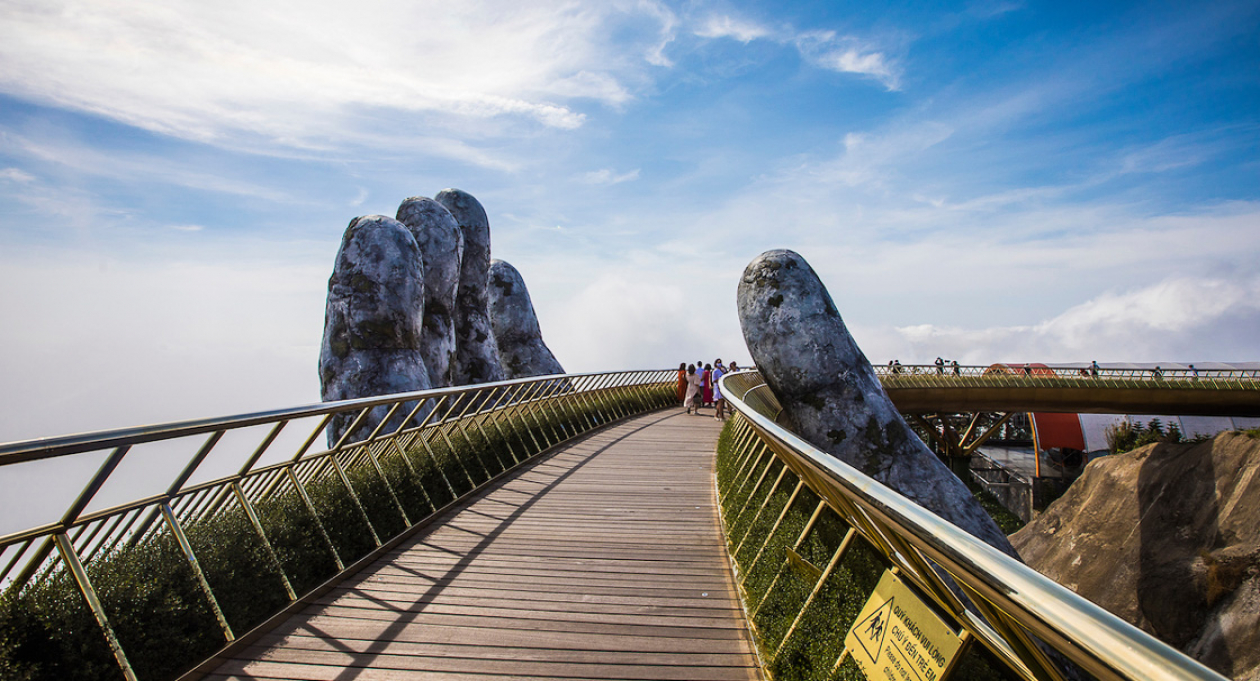
- 3 perfect days in Danang
All photography by Christian Berg
Da Nang is one of those places that’s got it all: breezy beaches, world-class leisure, compelling heritage sites and delicious cuisine. It's easy to wile away a few days in this coastal paradise, but to see the best of Da Nang ’s many assets, we recommend the itinerary below. Take in the beauty of Da Nang, from Son Tra Peninsula to the Marble Mountains, with these insider tips.
Day 1 – marble mountains, cham culture and the han river.
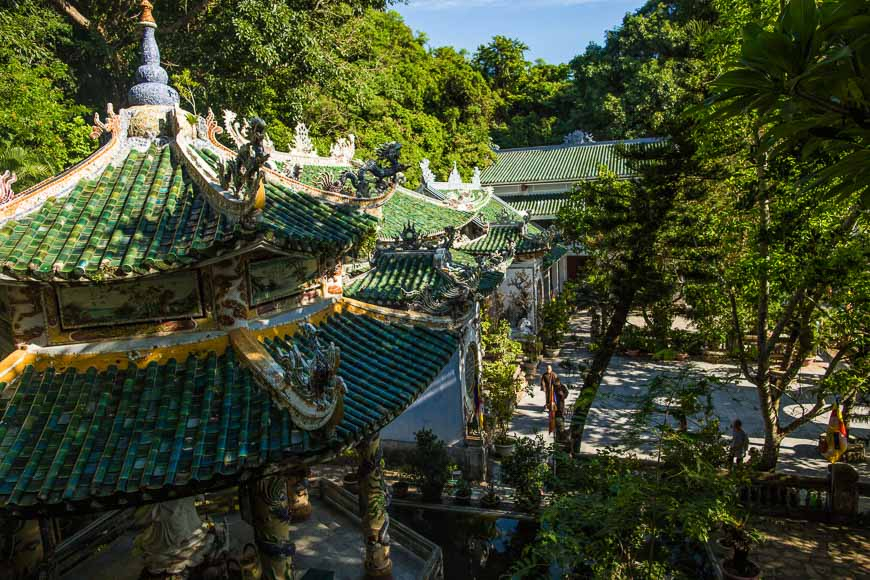
Morning: Just after breakfast and as early as you can manage, hop in a taxi to the Marble Mountains , five craggy limestone outcrops topped with serene pagodas just seven kilometres out of town. Thuy Son is the most famous of the five karsts with a number of caves in which Hindu and Buddhist shrines have been preserved over the centuries.
TIP: If you want a sneak peek, explore a 360-degree tour of the Da Nang here .
By the time you head back to town, you’ll be ready for a coffee fix. The Vietnamese mix with the best of them when it comes to caffeine consumption, and Da Nang cafe lovers are spoiled for choice. Local coffee shops such as Ca Phe Long and Cong Caphe serve up the potent, almost chocolate-y native brew at criminally low prices. For a more upmarket option, try 43 Factory Coffee Roastery .
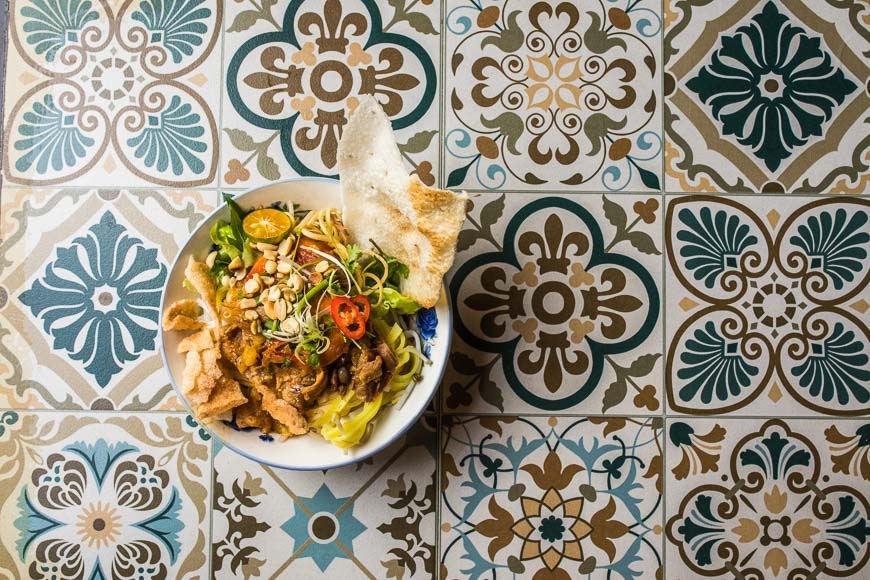
Lunch: Tuck into a bowl of mì Quảng, a delicious dish made with soft rice noodles, boiled pork, quail eggs, and sautéed shrimp topped with turmeric-infused broth, chilli, peanuts, and fresh herbs. Delicious!
Afternoon: From the centre of town, it’s an easy walk to the Museum of Cham Sculpture (spot Da Nang Cathedral en route, a cotton candy-pink edifice constructed by French colonialists back in 1923.) The Cham Museum is a must for history buffs and one of the best museums in Vietnam, housing Cham artefacts and sculptures discovered on digs all around the central coast as well as at My Son Sanctuary , dating from the 5th to the 15th century.
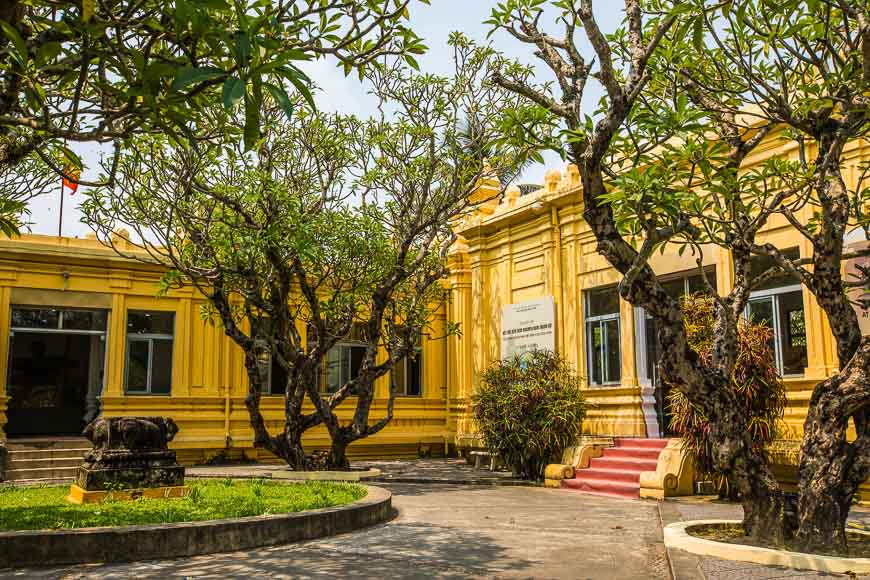
After delving into ancient culture, soak up some contemporary Da Nang culture with a stroll along the riverfront on Bach Dang St . Catch some late afternoons breezes off the Han River, see the marble art pieces set up along the banks, and enjoy the local vibe as couples, joggers and friends gather to enjoy the end of the day by the water.
Dinner: For your first evening in Da Nang, treat yourself to some fresh fusion at Fat Fish or try the creative modern Vietnamese concoctions at Nen Restaurant .
Day 2 – Day trip excursions, sunset views and seafood feasts
Morning: On your second day in Da Nang, strike out to see some of the province’s world-class wonders. If you’re an avid Instagrammer, the cable car and the Golden Hands Bridge at Sun World Ba Na Hills will give you ample opportunities to fill up your memory card. If you’re a keen golfer, enjoy a round or two at Da Nang’s designer golf courses along the seaside. If you’re more interested in cultural immersion, make the 45-minute trip out to the Hoi An Ancient Town to explore its photogenic alleys, pagodas, and shophouses.
Lunch: For lunch, try one of Da Nang’s favourite dishes : bún cá. Using the fresh fish pulled from the waters off Da Nang, cooks marinate the flesh with turmeric and spices. A broth of fish bones, pumpkin, cabbage, pineapple and tomato is poured over rice noodles and the boiled fish. Add sprouts, herbs, lime and chilli to taste.
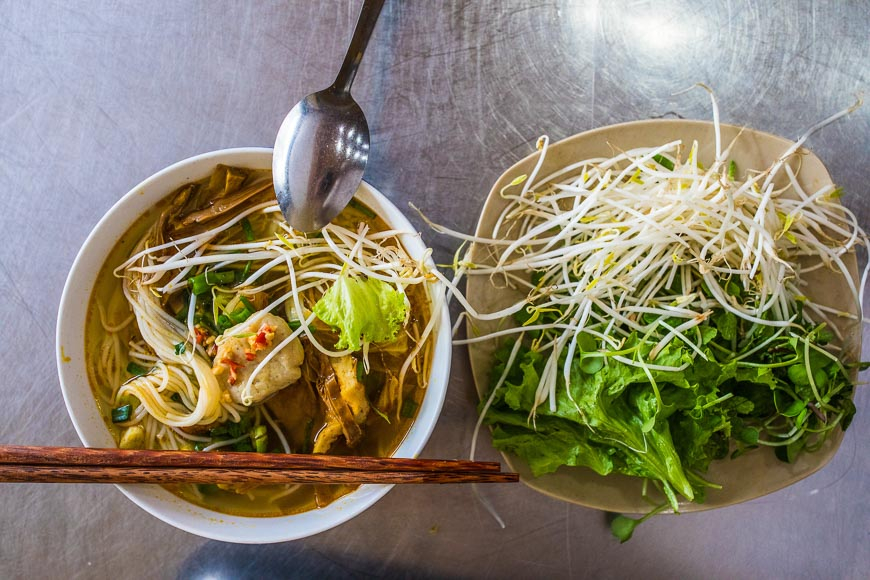
Afternoon: Back in Da Nang, spend a relaxing afternoon enjoying a few creature comforts. If you're up for shopping, you may be tempted by the chic boutiques sprinkled near the river and waterfront. Da Nang Souvenirs and Cafe provides a range of take-home mementos, and AVANA stocks amazing clothings and accessories inspired by the ethnic Co Tu minority. For a bout of indulgence, book a spa treatment, or take advantage of happy hour and swim a few laps at a rooftop pool, accompanied by views of the city skyline, Han River, and Son Tra Peninsula.
Dinner: Dine at the beach for a feast of fresh seafood plucked live from giant tanks. Consider some mantis shrimp fried with garlic, grilled calamari or clams steamed with coconut milk, lime leaves and chilli.
Day 3 – City tours, Son Tra Peninsula and beachfront bliss
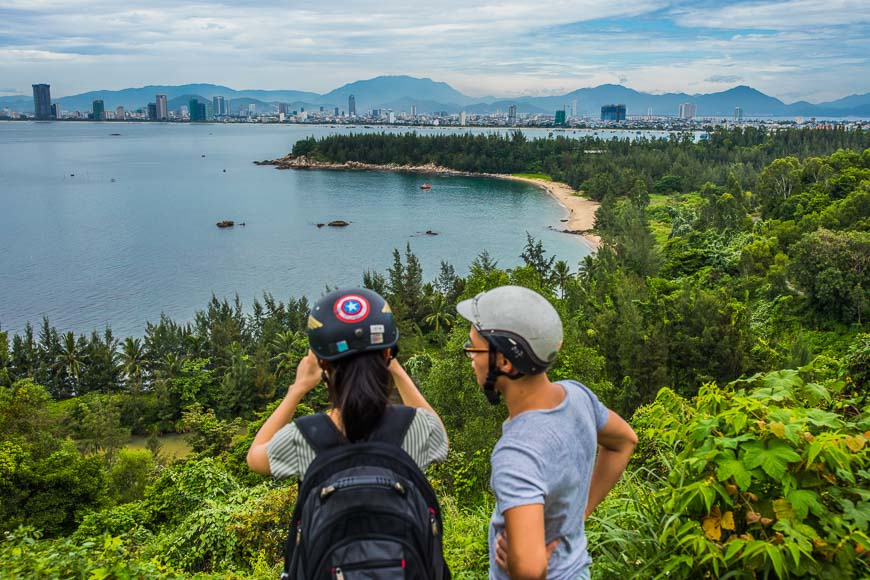
Morning: On your last morning in town, go deeper to explore Da Nang itself. Book a back-of-the-bike tour to visit the nearby fishing village, explore bustling markets, and be introduced to iconic cafes and street food stalls. Be sure to take a ride around the curves of Son Tra Peninsula to catch the stupendous views of My Khe Beach to the south and the Hai Van Pass to the north. Stop by the massive Linh Ung Pagoda to admire this Da Nang landmark, and if you’ve got more time to spare, drive all the way around the peninsula on the coastal road. The scenery is spectacular.
Afternoon: After all that adventure (and maybe a nap) it’s time to hit the beach and unwind, just like a local. Da Nang‘s shores get some excellent surf between November and March in case you want to catch a wave or two. If you prefer to lounge, grab a book and a cold coconut and watch the waves roll in on My Khe Beach.
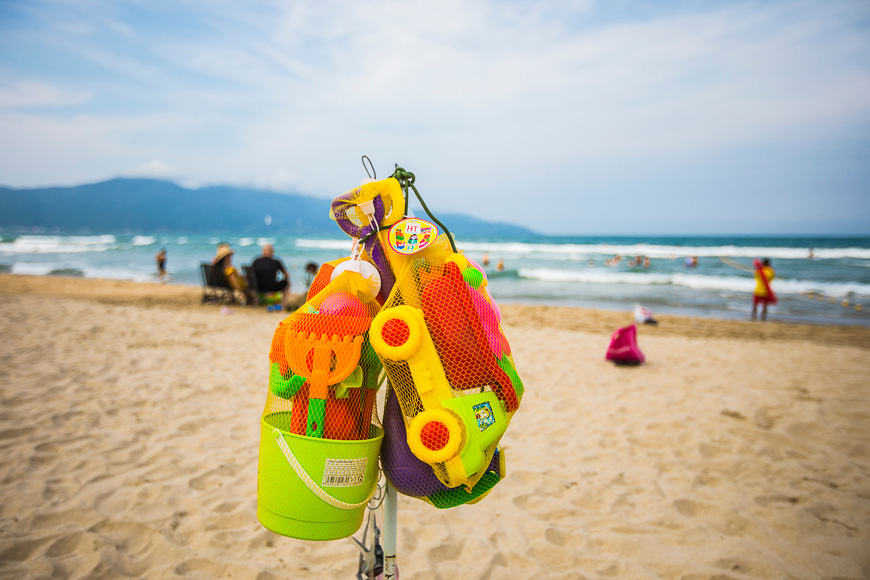
Dinner: Close out your Da Nang holiday with dinner at Ngon Villa . An elegant venue, this restaurant is a perfect spot to sample dishes from the region and share highlights from your visit.
Want more Vietnam travel ideas? Sign up for our newsletter to receive our best stories in your inbox.
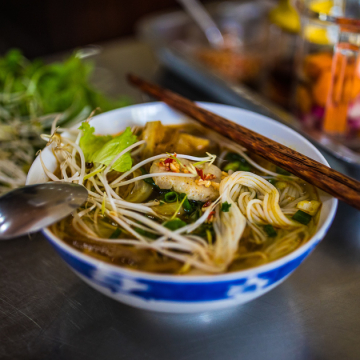
- You are here:
- Things to do
Create an account
Already have an account? Click here to sign in
By clicking submit, you agree to our Privacy Policy and Terms of Use
Sign in with your social accounts
Sign in with your email
Forgot password? Click here to get it back
Don't have an account? Sign up here
Forgot Password
The entered email has subscribed for Vietnam Tourism monthly newsletter
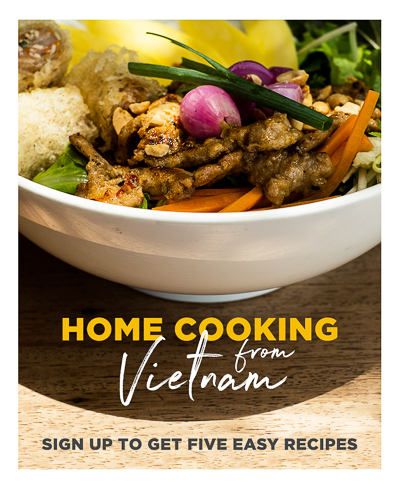
selectour voyage reunion


- TRAVEL GUIDES
- DESTINATIONS
- ADVENTURE TRIPS
- HOTELS & RESORTS
- FIND HOTELS WITH DISCOUNTED RATES!
ads_banners
2024 ho chi minh vietnam travel guide blog with diy itinerary, things to do, tourist spots, budget, tips and more.

Traveling to Ho Chi Minh Vietnam for the first time this 2024? Let this Ho Chi Minh (Saigon) travel guide blog for first-timers with sample DIY Ho Chi Minh itinerary, top things to do, tourist spots, and breakdown of expenses help you.
2024 first-timer's travel guide to ho chi minh, vietnam (updated), visa requirements for filipinos.

How To Get to Ho Chi Minh Vietnam?
Cheap flights to ho chi minh from the philippines, if you're traveling by land from cambodia or from hanoi, buses are available going to ho chi minh., airport to ho chi minh city center/saigon.
- Group of 3 - PHP 609.00 per car
- Group of 5 - PHP 710.00 per car
- Group of 12 - PHP 1,268 per car
How to Get Around Ho Chi Minh City?
When is the best time to visit ho chi minh, how many days to stay in ho chi minh.

How to Stay Connected?
- Validity: 10-30 days
- Internet speed: 4G
- Service type: Data only/Calls included
- Coverage area: The whole of Vietnam
- Data limit: 2GB per day, 10Gb or Unlimited Data
- SIM card size: Nano Micro Mini
- Hotspot Sharing: Yes
- Local telecom operator: Vinaphone
- Upload/Download Speed: 50Mbps/150Mbps
- Max. No. of Connected Devices: 5 devices
- Battery Life: 16 hours
- Coverage area: Multiple Countries
- Traffic Flow Limit: 4G unlimited data, 1GB, 500MB, or 350MB per day
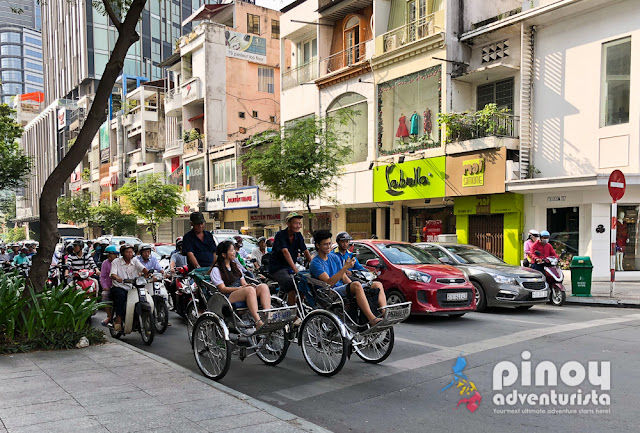
Where to exchange money?

Where to Stay in Ho Chi Minh
Saigon backpackers hostel @ pham ngu lao.
- 1 Bed In 8-Bed Mixed Dormitory Room - PHP 299.38 per night
- 1 Bed In 4-Bed Female Dormitory Room - PHP 349.28 per night
- Private Double Room - 1,097.744 per night for 2 persons
- √ Check room rates and availability here

Ho Chi Minh Vietnam - Tourist Spots, Attractions and Things To Do and Experience
Looking for best things to do, tourist spots and attractions in ho chi minh (saigon), vietnam, 1. visit the independence palace (reunification palace).

2. Saigon Cathedral of Notre Dame

3. Visit the War Remnants Museum
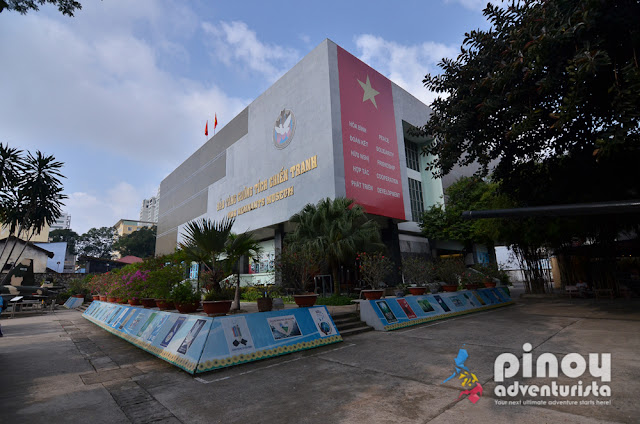
4. Saigon Opera House
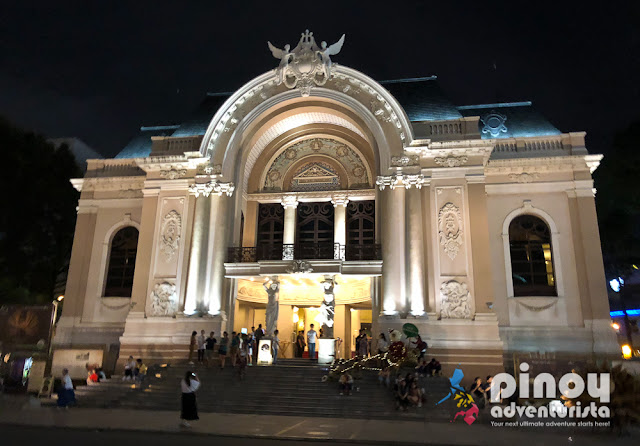
5. Watch a Water Puppet Show

6. Ride a Cyclo
A post shared by Pinoy Adventurista (Mervz) 🇵🇭 (@pinoyadventurista) on Jan 6, 2018 at 3:46am PST
7. Drop by Handicapped Handicrafts
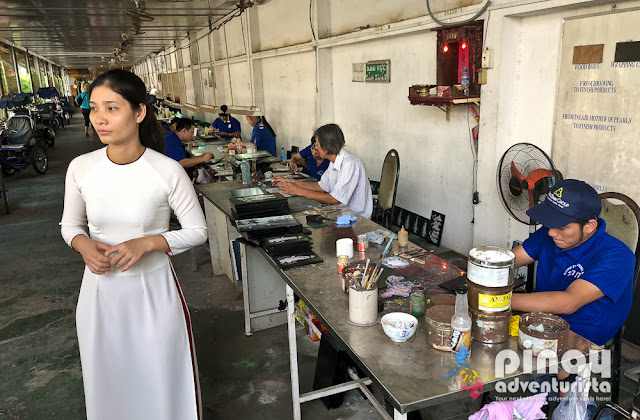
8. Explore Cu Chi Tunnels
A post shared by Pinoy Adventurista (Mervz) 🇵🇭 (@pinoyadventurista) on Dec 13, 2017 at 1:15am PST
OTHER OPTIONS:
- Cu Chi Tunnels and Mekong Delta Day Tour from Ho Chi Minh
- Cu Chi Tunnels VIP Tour by Limousine
Ho Chi Minh City & Cu Chi Tunnels Full Day Tour
- Cu Chi Tunnels Day Tour with Lunch
- Cu Chi Tunnels Premium Speedboat Tour
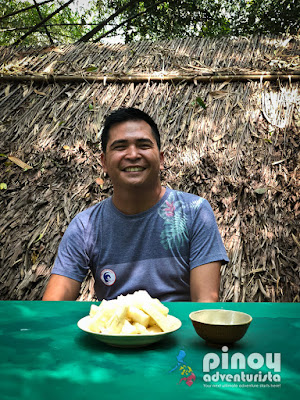
9. Ho Chi Minh City Hall
10. enjoy ho chi minh's skyline, 11. dinner at saigon river cruise.
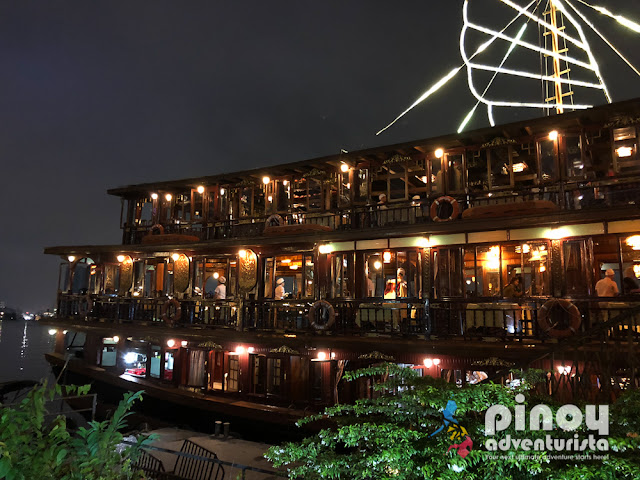
12. Shop at Ben Thanh Market
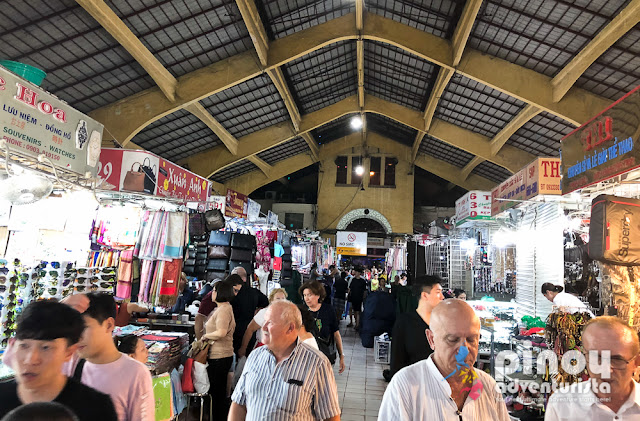
13. Enjoy a hot bowl of Phở

14. Snack on Bánh Mì
A post shared by Pinoy Adventurista (Mervz) 🇵🇭 (@pinoyadventurista) on Dec 13, 2017 at 4:34pm PST
15. Indulge on Delicious Vietnamese Coffee
A post shared by Pinoy Adventurista (Mervz) 🇵🇭 (@pinoyadventurista) on Dec 11, 2017 at 10:09pm PST
Other Things To Do and Must-See Tourist Spots in Ho Chi Minh
- Cai Be Floating Market And Tan Phong Island
- Saigon Street Food By Night Tour
- Saigon City Tour by Motorbike
- Ho Chi Minh City Tour on a Cyclo
- Saigon Princess Cruise in Ho Chi Minh City
- Can Gio Day Tour from Ho Chi Minh
- Street Food on Scooter Tour in Ho Chi Minh City
Saigon Motorbike Adventures
- Indochina Junk Dinner Cruise on Saigon River

Full Day Excursion To Mekong Delta

Cu Chi Tunnels Half Day Tour
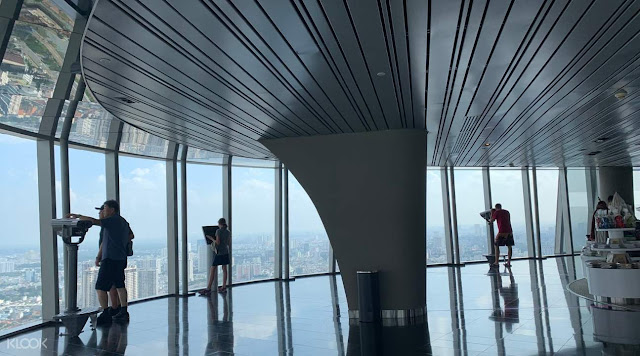
Saigon Skydeck in Bitexco Financial Tower

Saigon Cultural Evening Tour with Water Puppet Show and Dinner River Cruise
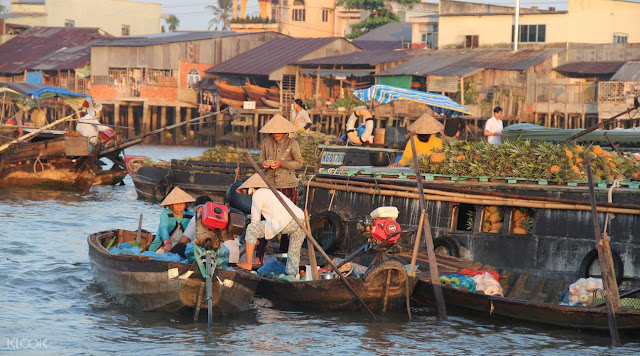
Mekong Delta, Cai Be Floating Market, and Tan Phong Island Full Day Tour
Best food, must-eats and experiences in ho chi minh.

Saigon Foodie Half Day Tour
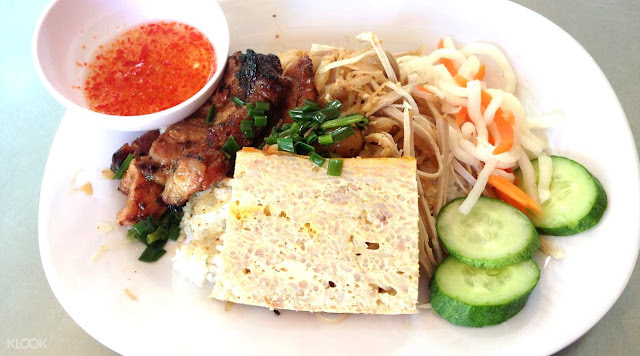
Saigon Street Food By Night

Saigon Vegan Foodie Adventure

Cooking Classes in Ho Chi Minh
- Cooking Class with Cu Chi Tunnels and Side Car Tour
- The Vietnamese Cooking Class
- Saigon Cooking Class by Hoa Tuc
- M.O.M Cooking Class in Saigon
Sample 3 Days and 2 Nights Ho Chi Minh DIY Itinerary
- Depart from Manila to Ho Chi Minh City Vietnam
- Arrival in Ho Chi Minh Airport
- Take a Grab Car to Pham Ngu Lao in District 1 (Saigon)
- Check-in or leave your bags at the hotel/hostel
- Breakfast (a hot bowl of Phở)
- Enjoy coffee at the street side coffee shops
- City Tour Part 1
- Reunification Palace
- Saigon Cathedral of Notre Dame
- Shop at Ben Thanh Market
- Walk around the streets
- Coffee again. Hahaha!
- Back at the hostel
- Breakfast at the hostel
- Travel to Chu Chi Tunnels - BOOK THIS TOUR HERE
- Chu Chi Tunnel Tour and Handicapped Handicrafts
- Back in Ho Chi Minh City Center
- Late lunch (Bánh Mì or at any local restaurant)
- Saigon Cultural Evening Tour - BOOK THIS TOUR HERE
- Water Puppet Show
- Dinner Cruise along Saigon River
- Have coffee
- City Tour Part 2 + Shopping
- War Remnants Museum
- Ho chi Minh City Hall
- Souvenir Shopping
- Check out at the hostel
- Travel back to Manila
- Or in our case, to Phnom Penh, Cambodia by bus
Ho Chi Minh Trip Budget and Expenses
List of basic expenses.
- Accommodation: PHP 300 - 5,000 per night
- Food: PHP 300 - 500 per day
- Transportation: PHP 100 - 200 per day
- Saigon Cultural Evening Tour with Water Puppet Show and Dinner River Cruise: PHP 2.028
- Cu Chi Tunnels Half Day Tour:PHP 660
- War Remnants Museum Entrance Fee: PHP 89.00
- Pocket WiFi Rental: PHP 254 per day
Sample Expenses for 5,000 PHP Budget
- Grab Car to Ho Chi Minh - PHP 243.00 / 2 = PHP 121.00 each
- Hostel - PHP 300.00 (1st Night)
- Food Expenses (Breakfast, Lunch and Dinner) - PHP 500.00
- City Tour Transportation - Free (We just walked to the destinations)
- WiFi Rental (Day 1) - PHP 254.00 / 2 = PHP 127.00 each
- TOTAL - 1,048.00
- Hostel - PHP 300.00 (2nd Night)
- Breakfast at the Hostel - Free
- Chu Chi Tunnel Half day Tour - PHP 660.00
- Saigon Cultural Evening Tour with Water Puppet Show and Dinner River Cruise - PHP 2,028.00
- Food Expense (Lunch only) - PHP 150.00
- WiFi Rental (Day 2) - PHP 254.00 / 2 = PHP 127.00 each
- TOTAL - PHP 3,265.00
- War Remnants Museum Entrance Fee - PHP 89.00
- Food Expense (Lunch and Dinner) - PHP 300.00
- WiFi Rental (Day 2) - PHP 254.00 / 2 = 127.00 each
- Grab Car to Airport - PHP 243.00 / 2 = PHP 121.00 each
- TOTAL - PHP 637.00
Grand Total - PHP 4,950 ($ 100++ USD)
- Round trip airfare Manila-Ho Chi Minh-Manila
- NAIA terminal fee and travel tax
- Budget for pasalubong and tips
- Food expense for snacks
I hope this First-timer's Travel Guide to Ho Chi Minh Vietnam will help you in planning an awesome adventure! Enjoy and have fun!
Follow my adventures on youtube @pinoyadventurista, 4 comments :.

Is it safe to travel to Saigon, is it safe to use selfie stick, and is it required to give a tip as it was in the Philippines? Thank You!
Hi. My family and I were planning to go to Hong Kong this December. We’ve already purchased the tickets months ago. However, with the events happening in HK now, we’re also looking for other options aside from HK. We a group of 20 including kids and senior. Is Vietnam a good substitute for HK? Or do you have any other suggestions? (Singapore and Taiwan is out of the list since we’ve already been there). Thanks in advance.
Hi, can,I ask something? How to book in grab for transportation? I can't book while in Philippines. I want to book early for my transpo. From ho chi minh airport to saigon. Thank you.
Hi, what are the requirements on Vitenam's immigration if you will be exiting through Cambodia? Because they might not know that you already left their country. 😅
Looking for Budget Travel Guide Blogs, Hotel Reviews, and Sample DIY Itineraries? Welcome to Pinoy Adventurista, "Your Next Ultimate Adventure Starts Here!" Pinoy Adventurista is one of the Top Travel Blogs in the Philippines and the World. In 2013, he visited all the 81 provinces in the Philippines.

- Check Visa Status
- Download Forms
- Help & Support
- How It Works
- Vietnam Visa Exemption
- Vietnam Embassy List
- Vietnam Visa News
- Vietnam Travel News
- Questions & Answers
- +84.909.597.525
- [email protected]
© Copyright 2024 Vietnam-Evisa.Org
- Questions & Answers
Traveling from Moscow
The US passport holders are required to get a Vietnam visa before entering the country, no matter where you are.
Thanks and best regards,
Hannah Yan (Ms.)
Post Your Comment
* Questions & Answers are typically posted within 24 hours, pending approval.
Related Questions
- US and Philippine passport
- single or multiple visa?
- Should I apply E-Visa in Vietnam?
- Visa requirements
- Apply to get Visa
- Visa inquary.
- VISA FOR CRUISE - 4 VIETNAM PORTS
- Meet Our Team
- Our Services
- Terms and Conditions
- Privacy Policy
Useful Information
- Vietnam Electronic Visa (e-Visa)
- What is Vietnam Visa on Arrival?
- How to apply Vietnam Visa online?
- Payment Instruction
- Cancel and Refund
- Money back guarantee
- Safety Payment
Vietnam Visa Tips
- Vietnam visa for Australia
- Vietnam visa for Canada
- Vietnam visa for India
- Vietnam visa for Singapore
- Vietnam visa for UK
- Vietnam visa for USA
- And more...
- Vietnam Visa Information
- Check Visa Requirement
- Questions and Answers
- Legal Basis
Copyright © 2024 VIETNAM EVISA DEPARTMENT. All rights reserved.
May 6, 2024
10 most affordable countries in the world
Affordable nations.
These countries have budget living costs, which makes them perfect destinations for travellers looking to explore new cultures, and landscapes without burning a hole in their pockets.
Known for its beautiful beaches, rich culture, and delicious cuisine, Thailand offers affordable living costs, especially outside of major tourist areas like Bangkok and Phuket.
With its stunning landscapes, vibrant cities, and delicious street food, Vietnam is a budget traveler's paradise, offering affordable accommodation, transportation, and dining options.
The Philippines
Philippines is home to over 7000 islands! The country is noted for its stunning beaches, diverse marine life, and friendly locals. The cost of living is relatively low, making it an affordable destination.
Home to scenic beaches, lush rice terraces, and vibrant culture, Indonesia offers affordable living costs, with budget-friendly accommodation and dining options available throughout the country.
From the majestic palaces of Rajasthan to the serene backwaters of Kerala, India offers a wealth of experiences at affordable prices. Accommodation, transportation, and food are all relatively cheap.
You may also like
With its blend of modern cities, tropical islands, and diverse cuisine, Malaysia offers affordable living costs, especially in cities like Kuala Lumpur and Penang.
From the historic streets of Istanbul to the stunning landscapes of Cappadocia, Turkey offers a mix of culture, history, and natural beauty at affordable prices. Accommodation, dining, and transportation are all reasonably priced.
With its ancient landmarks, bustling cities, and diverse cuisine, China offers affordable living costs, especially in smaller cities and rural areas. Travellers can explore iconic sights without overspending.
From the sandy beaches of Cancun to the charming streets of Oaxaca, Mexico offers affordable living costs, with budget-friendly accommodation, transportation, and dining options.
Home to the iconic temples of Angkor Wat, Cambodia offers affordable living costs, with budget-friendly accommodation and dining options available in cities like Siem Reap and Phnom Penh.
Thanks For Reading!
Next: Most expensive countries in the world

Philippines embassy in Moscow, Russia

About Us | Contact Us | Vietnam Travel | Vietnam Visa | Vietnam Airlines | Vietnam Tour | Vietnam Hotel Email: [email protected] . Copyright © 2007 Smiletravelvietnam.com. All rights reserved.
Members save 10% or more on over 100,000 hotels worldwide when you’re signed in
Cheap flights to elektrostal.
Add a place to stay
Direct flights only
More to explore for Elektrostal
Related airlines.
- Expedia's Latest Trends
- Darwin Airline SA Lugano
- Evergreen International
- Ghadames Air Transport
- Aircompany Kokshetau
- Royal Airways Limited
- Vietnam Air Service Co.
- West Caribbean Costa Rica
- Olympus Airways
- Bulgarian Air Charter
- Branson Air Express
- Deutsche Bahn

IMAGES
VIDEO
COMMENTS
3. Aside from touring around the city, Catriona also spent time on her advocacy with Smile Train Vietnam which helps patients receive comprehensive cleft care. Catriona kept her OOTD simple yet chic for her brief visit at the hospital and opted for a white v-neck shirt teamed with a multi-colored midi skirt.
Blog: https://artcadence.blogspot.com/Facebook: https://www.facebook.com/ArtCadencebyLiraCadornaTwitter: https://twitter.com/LirzzzieInstagram: http://instag...
Explore Vietnam Holiday Trip with Halong Bay Cruise . Experience the Best of Vietnam - 11 Nights 12 Days . 7 Days Package Trip to Vietnam: Free Water Puppet Theatre . Jewels of Cambodia and Vietnam Tour Package With Cruise . Vietnam Itinerary 5 Days with Excursion to Ninh Binh . Vietnam Itinerary 8 Days: With Golden Sand Dunes in Mui Ne
Ba Be National Park (Near Sapa) Bach Ma National Park (between Dan Nang and Hue) Dong Ha - for DMZ tour (Between Dong Hoi and Da Nang) 2 Week Vietnam Itinerary - 1 Week in the South. Day 1 - Nha Trang. Day 2 - Dalat. Day 3 - Mui Ne. Day 4 and 5 - Ho Chi Minh City. Day 6 and 7 - Phu Quoc Island.
A sarong. Light jacket or fleece. A hoodie plus warm layers are recommended for the evening during cooler months (especially if traveling to Northern Vietnam) Warm jacket, gloves and beanie if traveling to Saba between November and February. A raincoat. A hat. Sunglasses. Sunscreen. Comfortable walking shoes.
Here's our take during our BFF trip, we plan our outfit during this trip and it was a quite tiring process but still we make it through. All the outfits we wear turns out so nice and cute! Even though we are in Vietnam for just 5 days 4 nights, we change to a total of 9 outfits, and it was the crazy process I would admit.
4. Comfy White Shoes. For travel shoes, it's always comfort before style. But of course, it helps to get a stylish pair. I've written extensively about my favorite travel shoes here. These GoWalk pair is seriously my currently favorite. Plus, I got mine in white because they match everything! 5. Black Boots.
Hanoi: The capital of Vietnam, Hanoi is a fascinating city with a long and rich history that dates back more than 1,000 years. This charming metropolis is set amongst scenic lakes and rolling hills and is full of beautiful temples, pagodas, and traditional Vietnamese architecture.. Ha Long Bay: Considered one of the most stunning destinations in Southeast Asia, Ha Long Bay features thousands ...
To call for emergency services while in Vietnam, dial 115 for an ambulance, 114 for the fire department, and 113 for the police. Write these numbers down to carry with you on your trip. Learn as much as you can about Vietnam before you travel there. A good place to start is the country-specific information on Vietnam from the US Department of ...
Sheeps - OOTD, Ho Chi Minh City, Vietnam. 3,708 likes. Contemporary womenswear label in Vietnam. All prints are original to the label, fabrics are largely
8 ม.ค. 2023 - สำรวจบอร์ด "Vietnam travel" ของ Bankie Worasetsak บน Pinterest ดูไอเดียเพิ่มเติมเกี่ยวกับ เวียดนาม, ฮอยอัน, สไตล์มินิมอล
Live fully in Vietnam. Vietnam opens its door widely to welcome visitors all around the world! Starting from 15th August 2023, Vietnam extends e-visa validity to 90 days and unilateral visa exemption will be valid in 45 days! We are more than happy to welcome you all here and admire our stunning landscapes, free your soul on white sandy beaches ...
Play a round of golf. At 5,000 feet above sea level, Da Lat's golf clubs feature hilly terrains and pine forests. Da Lat is home to one of the country's oldest courses, the Dalat Palace Golf Club. Opened in 1933, the 18-hole course remains an iconic experience. Hike, bike, or find a waterfall. Da Lat is an adventure destination in its own ...
Brits can travel in Vietnam for up to 45 days visa-free under the country's new visa waiver system. InsideAsia has an 11-night southern Vietnam itinerary from £3,300 per person.
154 Likes, TikTok video from Ainaa jalan jalan (@tripkakna.ajakjalan): "Join us in exploring Cat Cat Village in Sapa, Vietnam on Day 3 of our trip! Get ready for some OOTD shots and discover the beautiful attractions and local cuisine. Follow us for more exciting travel content! #fyp #sapa #trip2024 #vietnam #catcatvillagesapa".
Day 3 - City tours, Son Tra Peninsula and beachfront bliss. Morning: On your last morning in town, go deeper to explore Da Nang itself. Book a back-of-the-bike tour to visit the nearby fishing village, explore bustling markets, and be introduced to iconic cafes and street food stalls. Be sure to take a ride around the curves of Son Tra ...
Vietnam in July and August is the hottest time of the year in the north, with plenty of rain. While this is low tourism season in many parts of Vietnam, prices are higher in beach areas along the coast. Taking trips to higher-elevation areas and central Vietnam, such as Dalat and Hoi An, are great due to a comfortable climate. Holidays & Events
Discover videos related to vietnam travel ootd on TikTok. Videos. chl0beary. 4213. Outfits I wore on vacation in Vietnam... If you want to make the most out of your time, fly into either Ho Chi Minh City (Saigon) and out of Hanoi or vice versa then either travel north or south.... Packing list for Vietnam · Loose, breathable clothing that ...
It will provide you with useful information you need on your travel such as how to get there, visa requirements, top things to do, top tourist spots and attractions, where to stay, sample DIY itinerary (3 days & 2 nights), budget, expenses, and more. 2024 First-Timer's Travel Guide to Ho Chi Minh, Vietnam (UPDATED)
Take me back to VIETNAM. #travel #travelgram #ootd #ootdfashion #ootdtravel #vietnam. supramiya · Jdot Breezy - Shoot it Out (Slowed)
Vietnam Visa News; Vietnam Travel News; Questions & Answers; Contact; Toggle navigation +1 (800) 741 9567 +84.909.597.525; [email protected]; Sign In; Home; How It Works; Apply Visa; Visa Fees; ... Vietnam Evisa Support. Nov 10, 2017. Hi Mike, The US passport holders are required to get a Vietnam visa before entering the country, no matter ...
Vietnam. With its stunning landscapes, vibrant cities, and delicious street food, Vietnam is a budget traveler's paradise, offering affordable accommodation, transportation, and dining options.
Dmitrija Uljanova 16, Corpus 2, Entrance 8, Floor 1, Suite 509&510 is address of Macedonia embassy in Moscow, Russia where you can apply visa to Macedonia. The embassy section assists both Macedonia nationals looking to apply for a visa to enter the Russia as well as foreigners seeking information on entering the Macedonia.
1. Passport/Travel Document Valid for at least six (6) months beyond the intended period of stay in the Philippines; 2. Duly Accomplished Visa application forms; 3. Passport Photos (2 pieces); 4. Proof of bona fide status as tourist or businessman; 5. Confirmed tickets for return or onward journey to the next port of destination; and 6.
Shop travel. Shop travel. Stays Stays. Flights Flights. Cars Cars. Packages Packages. Things to do Things to do. Groups & meetings. Download button with download icon. Get the app. English. List your property Support Trips. Sign in. Members save 10% or more on over 100,000 hotels worldwide when you're signed in ...